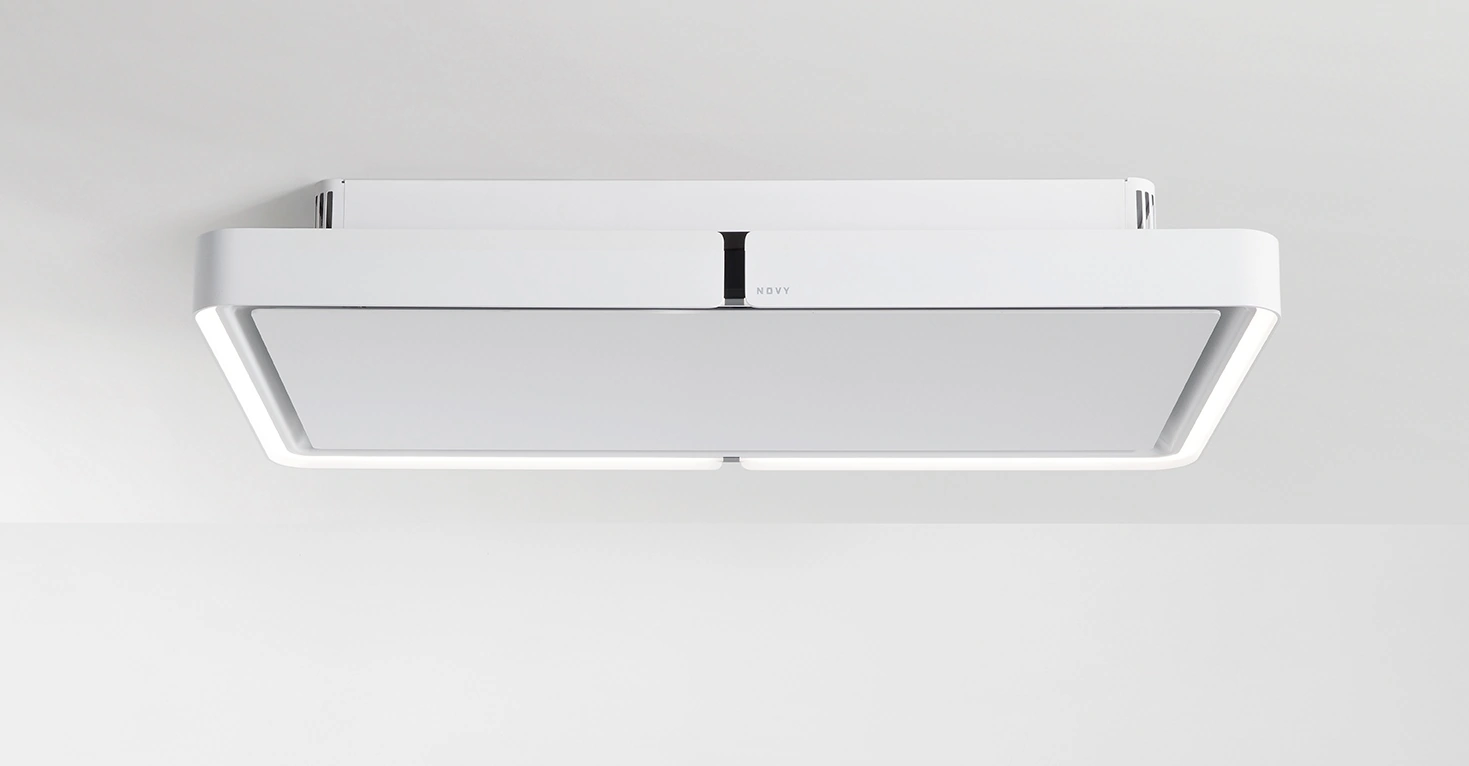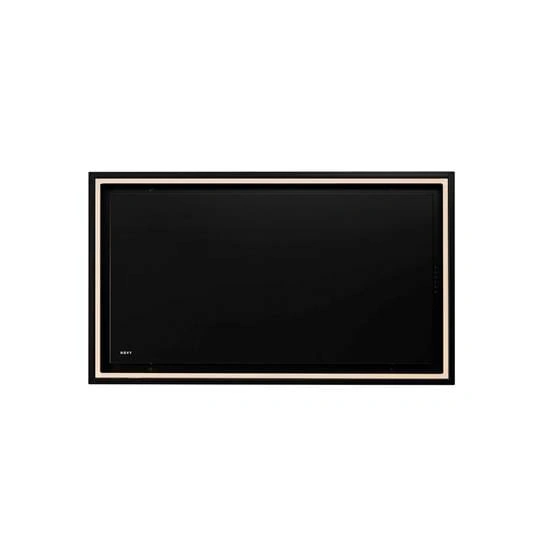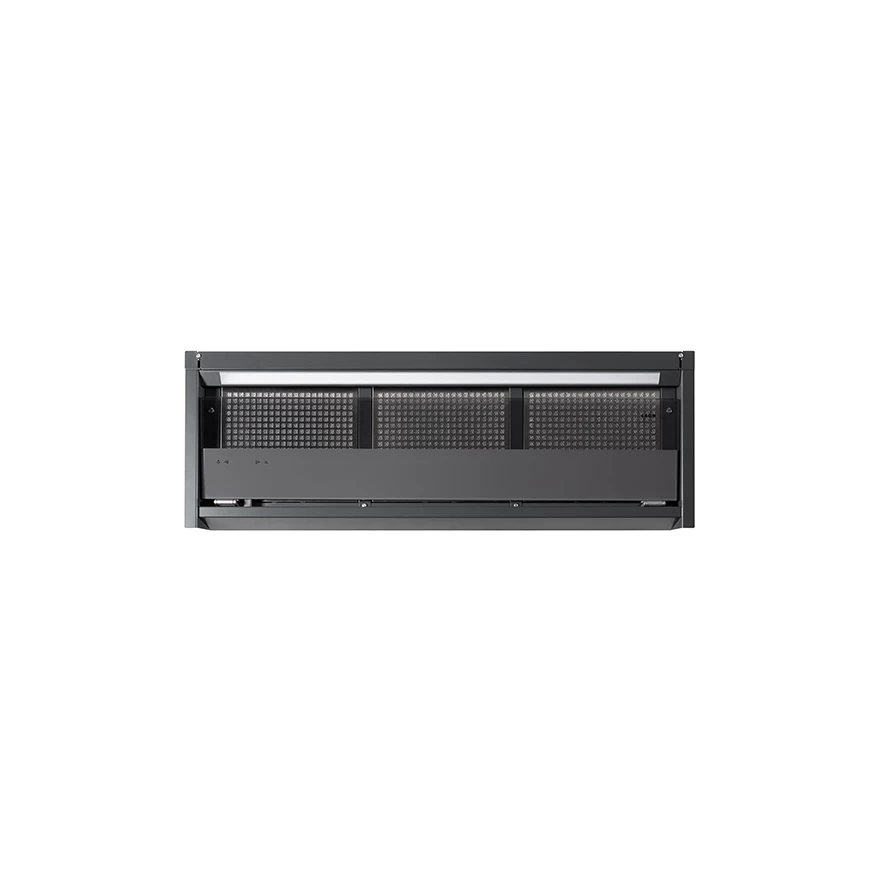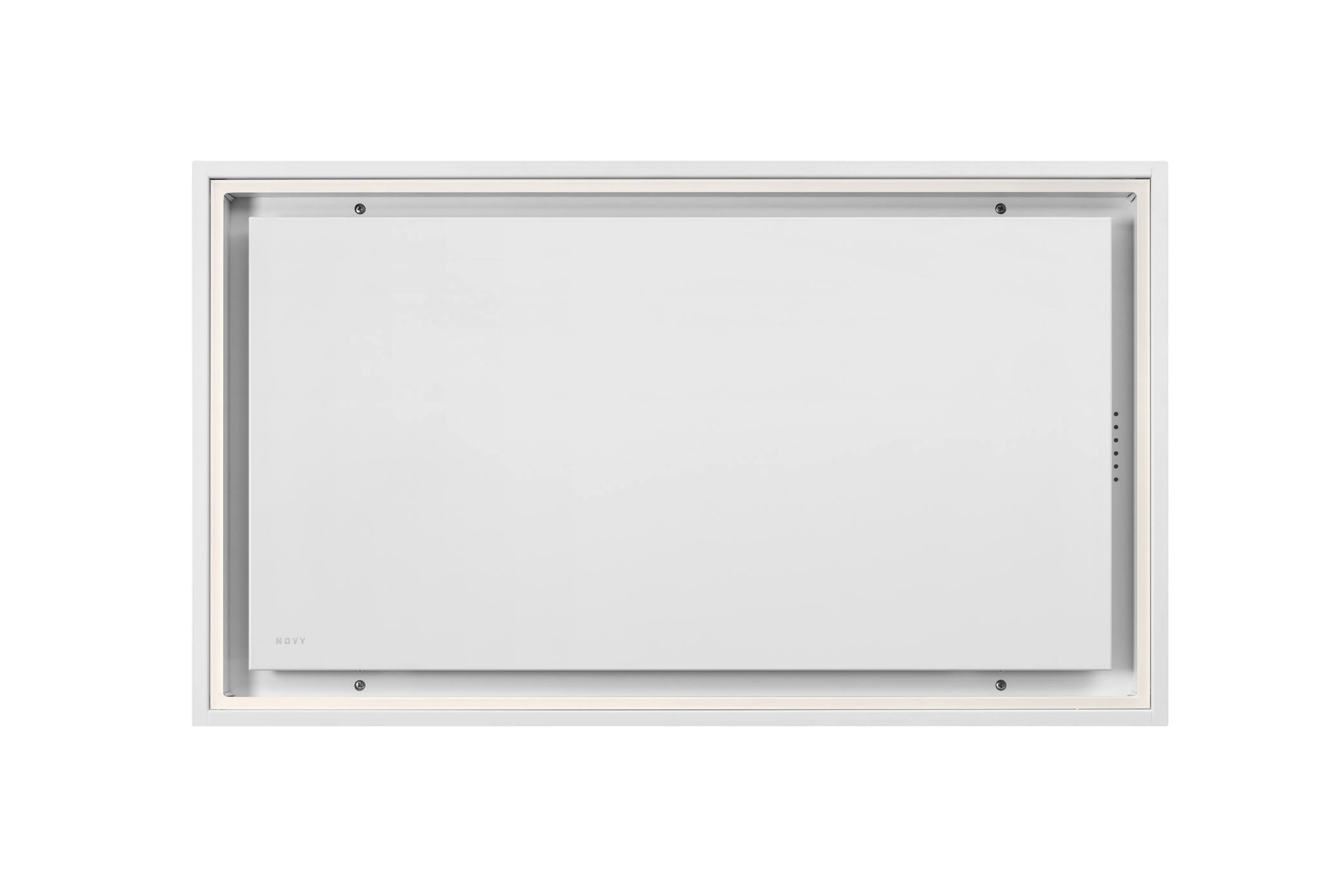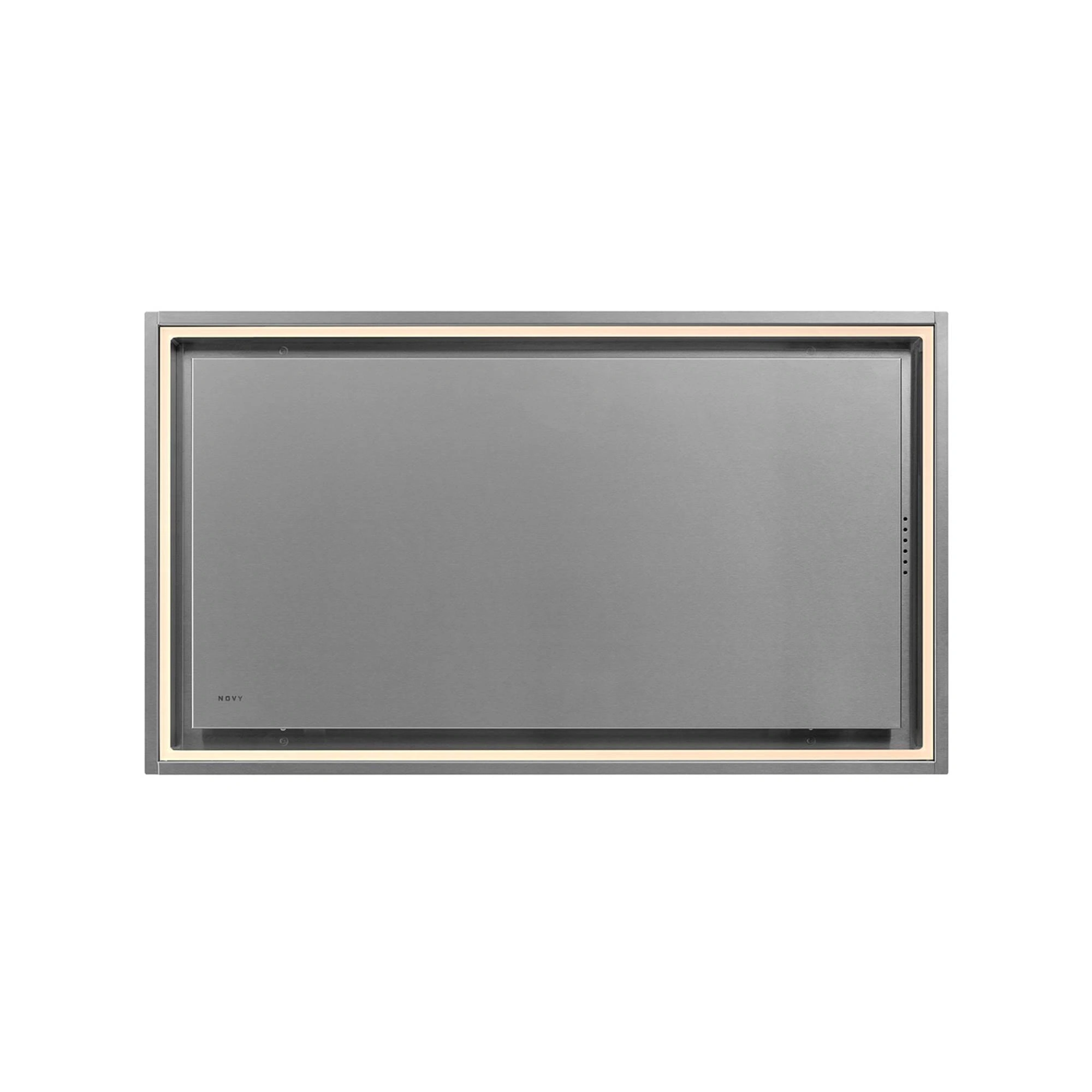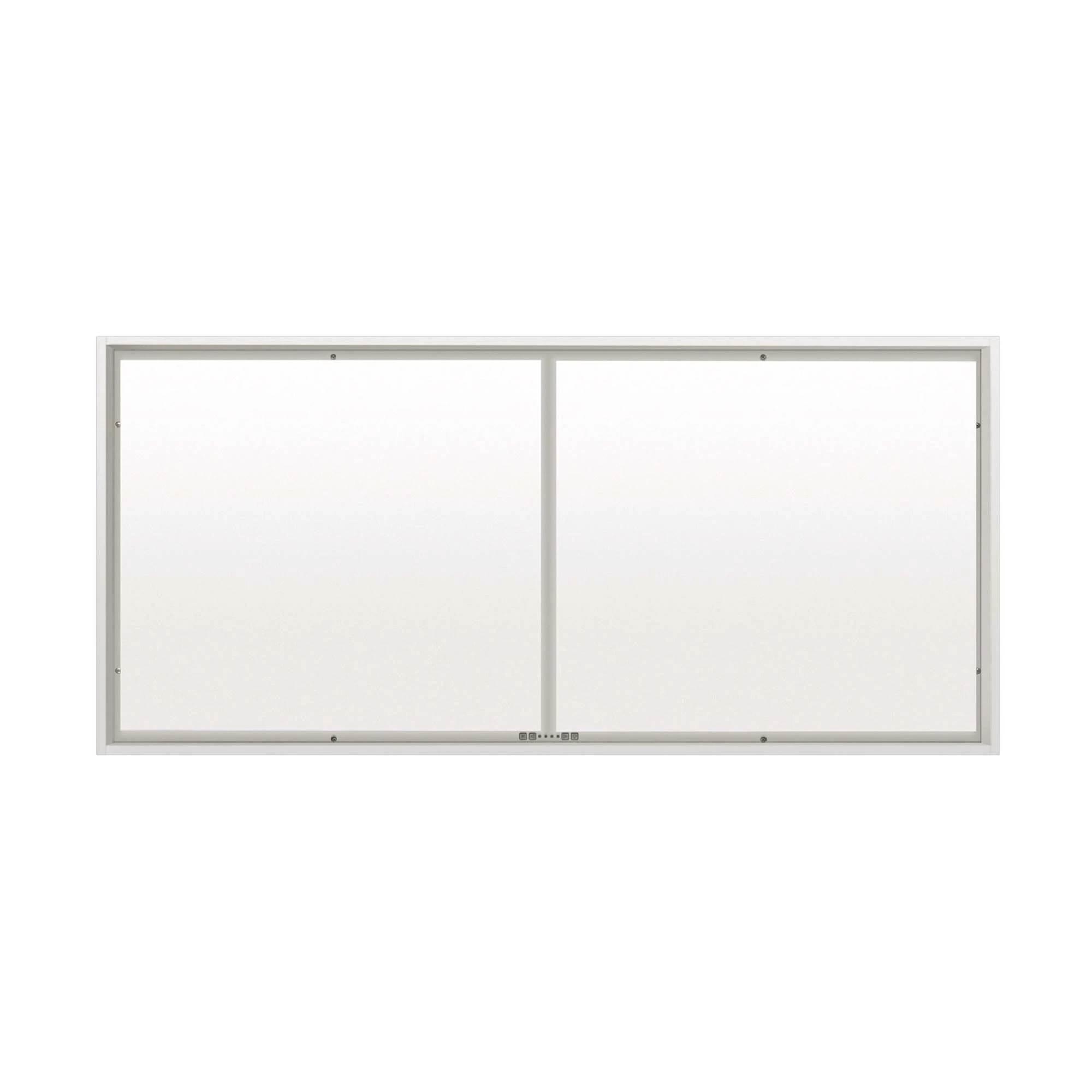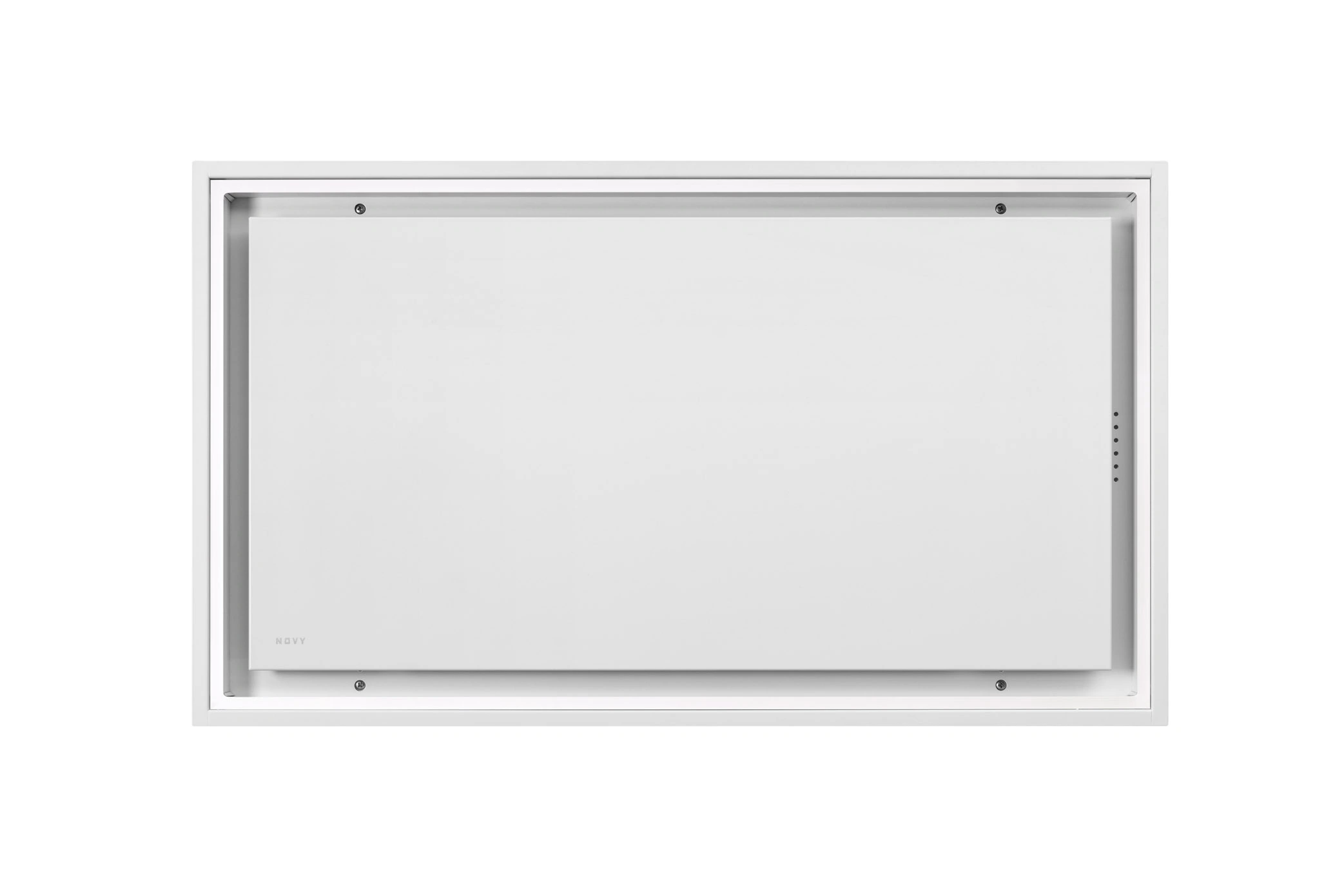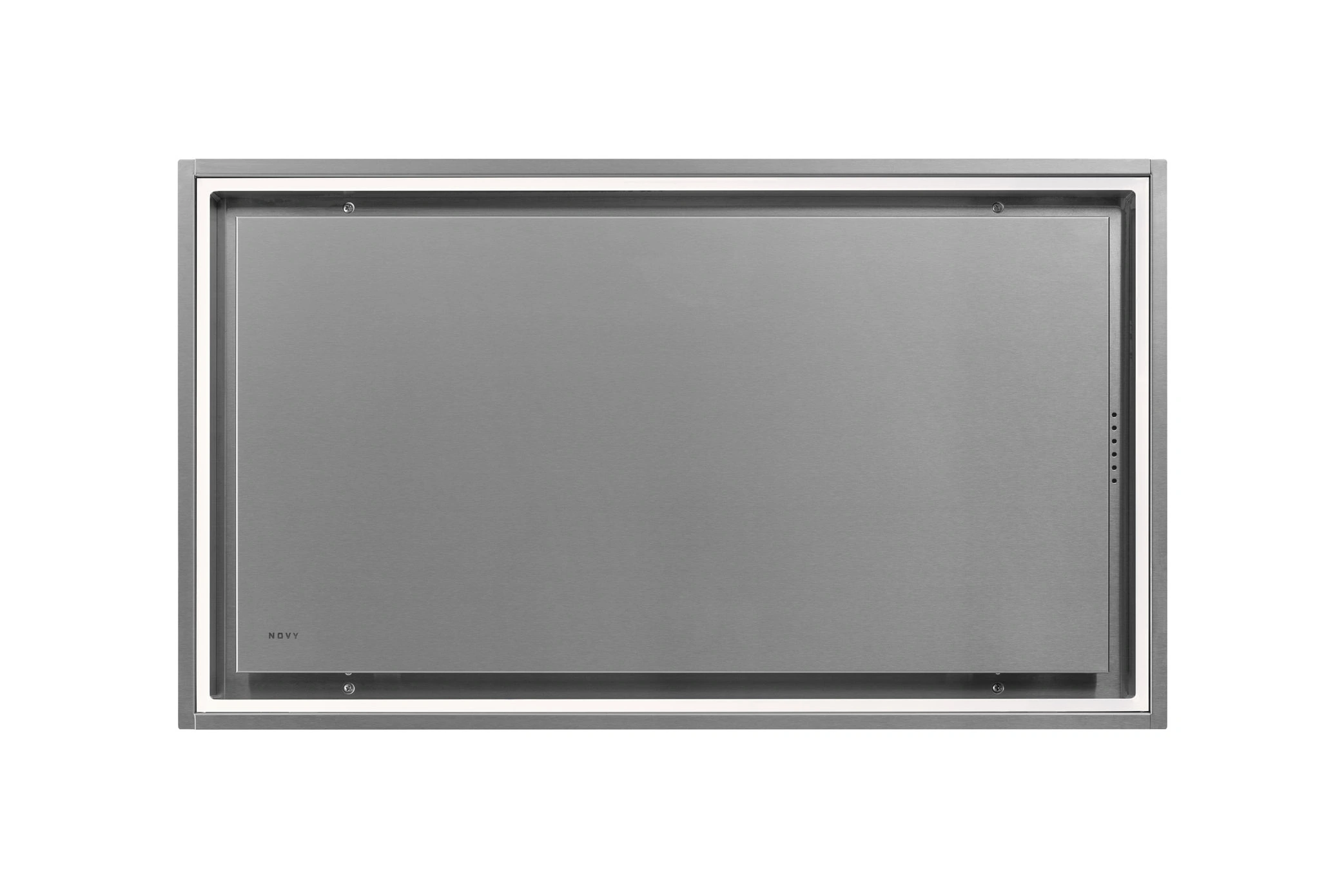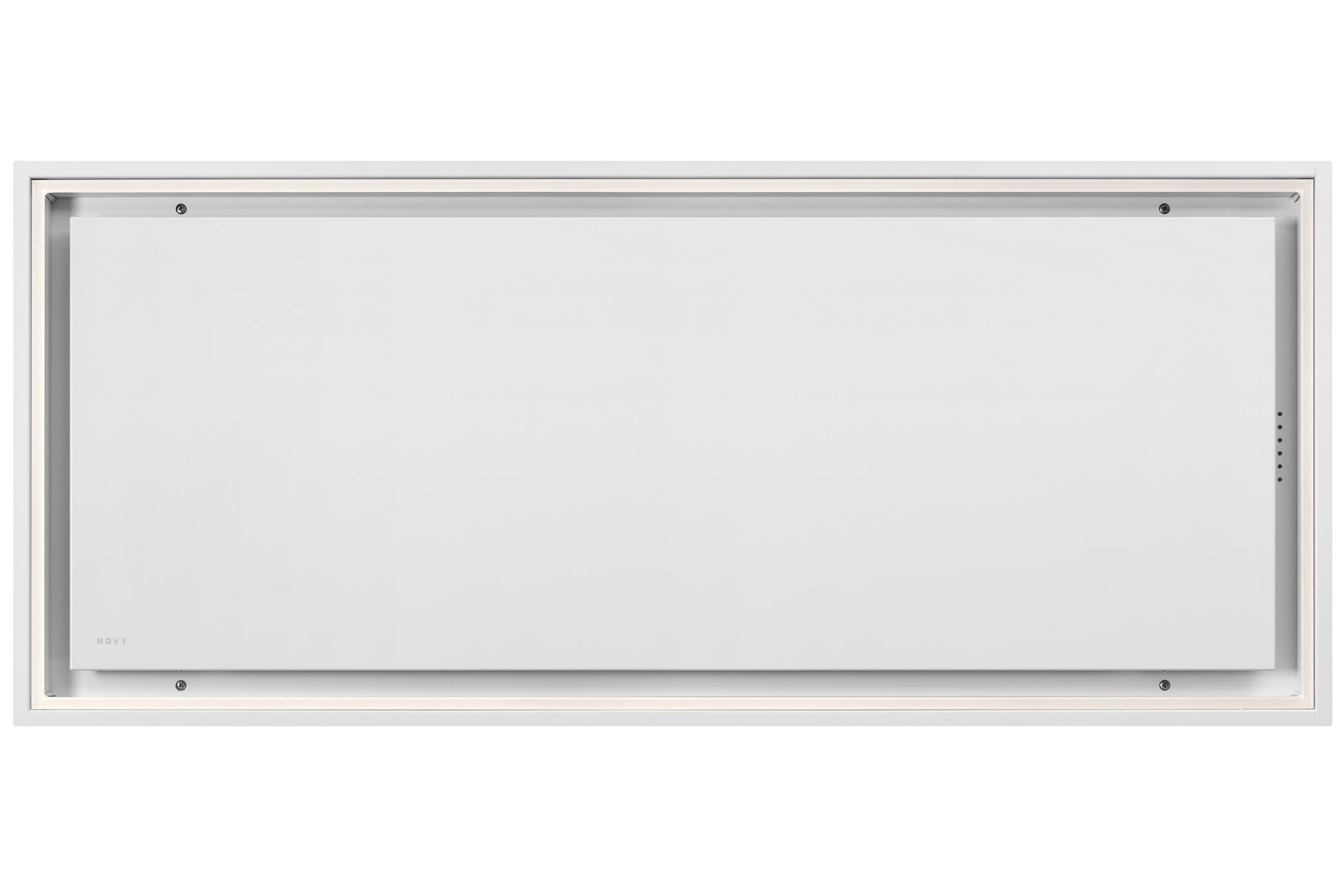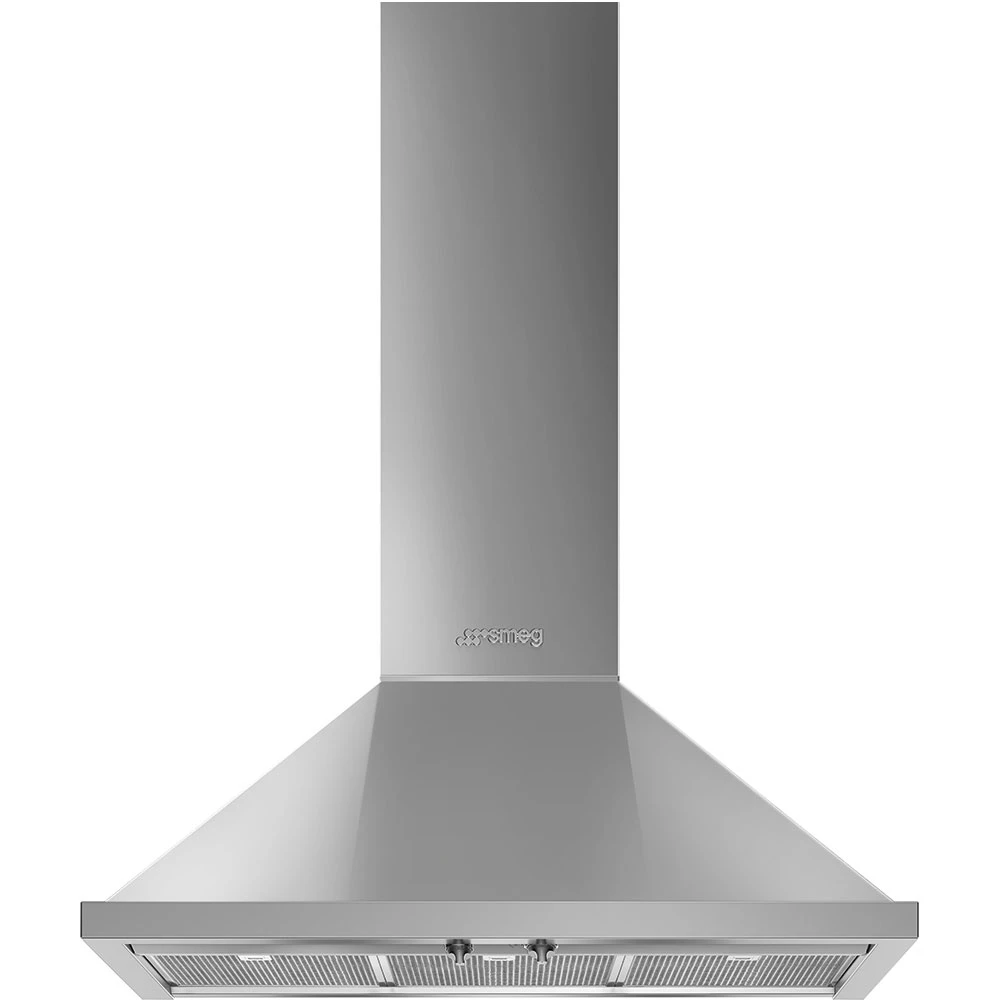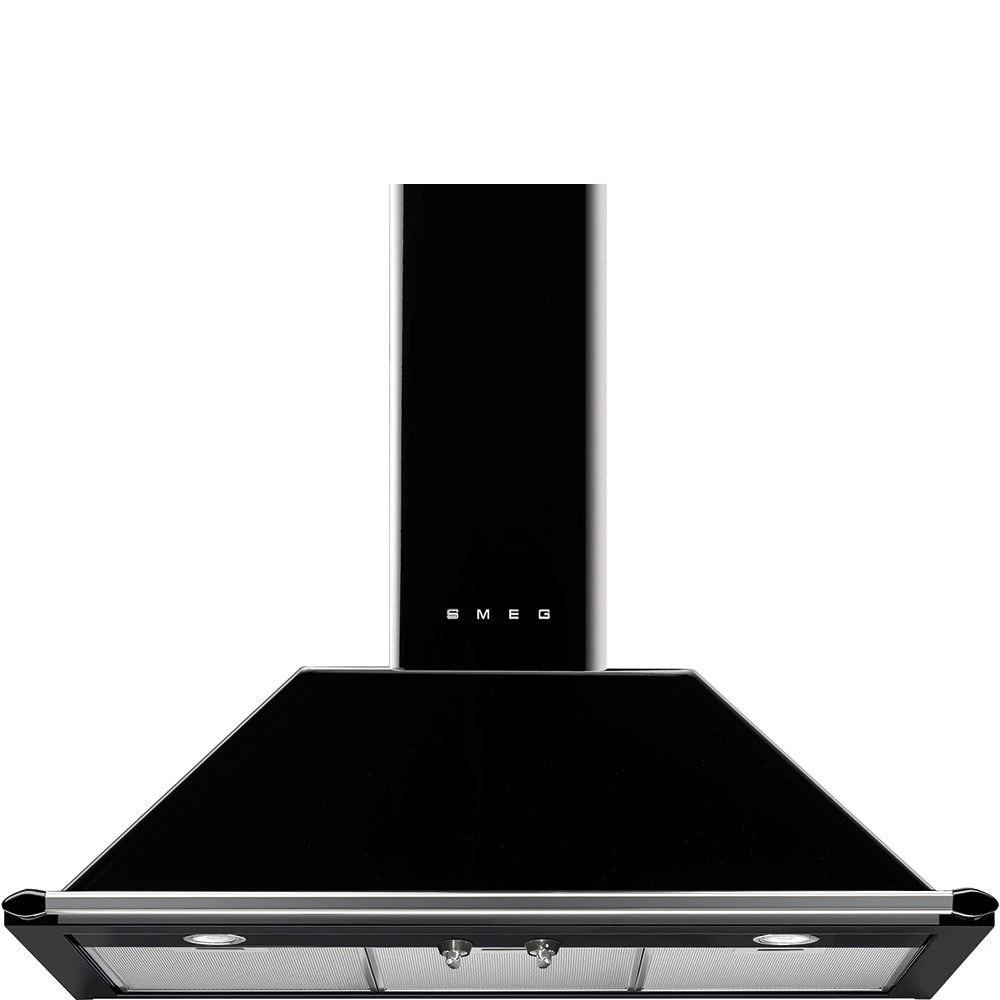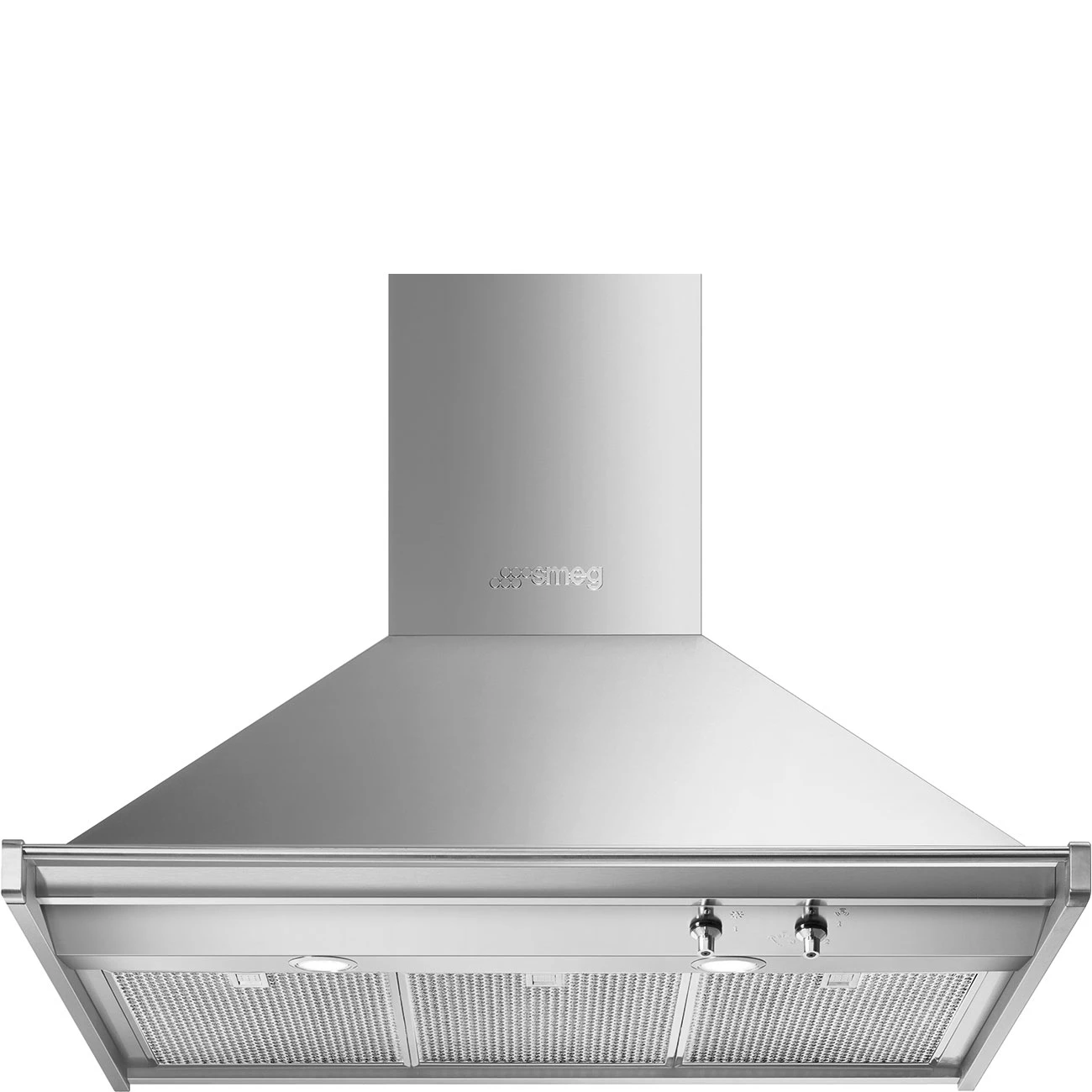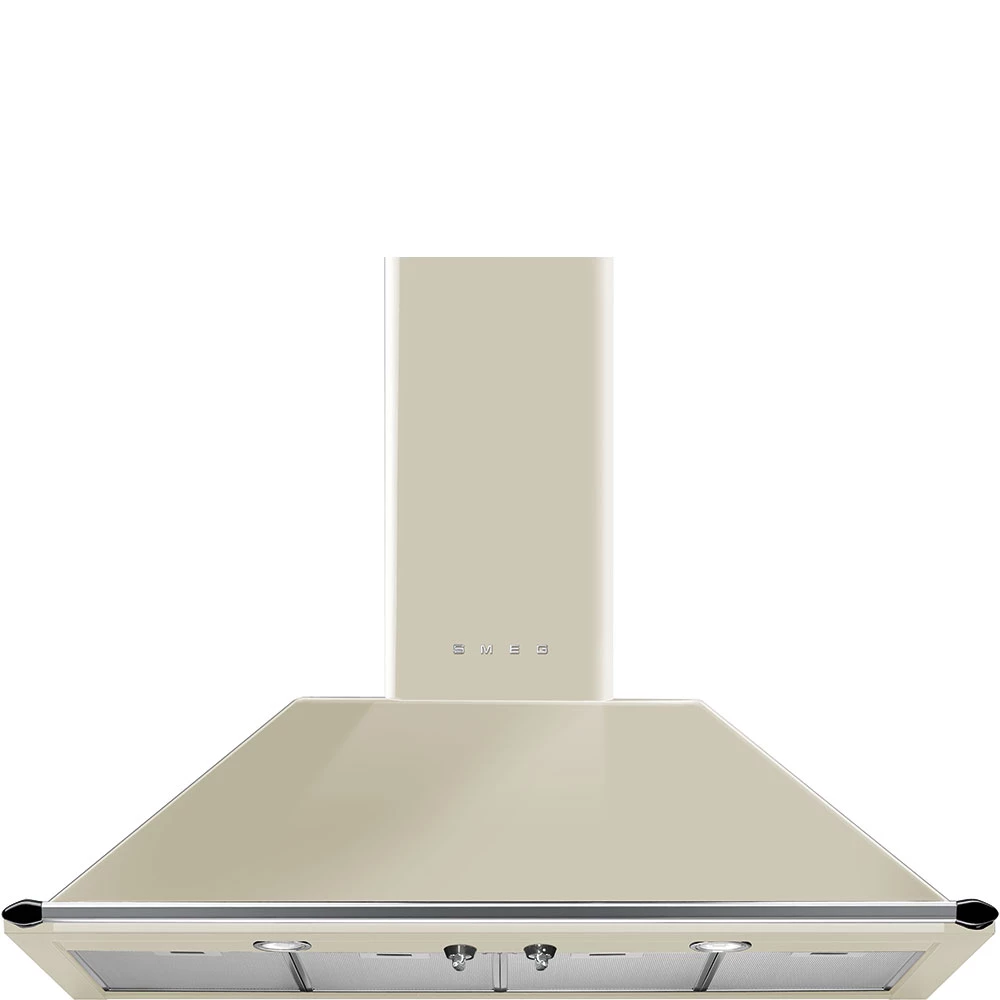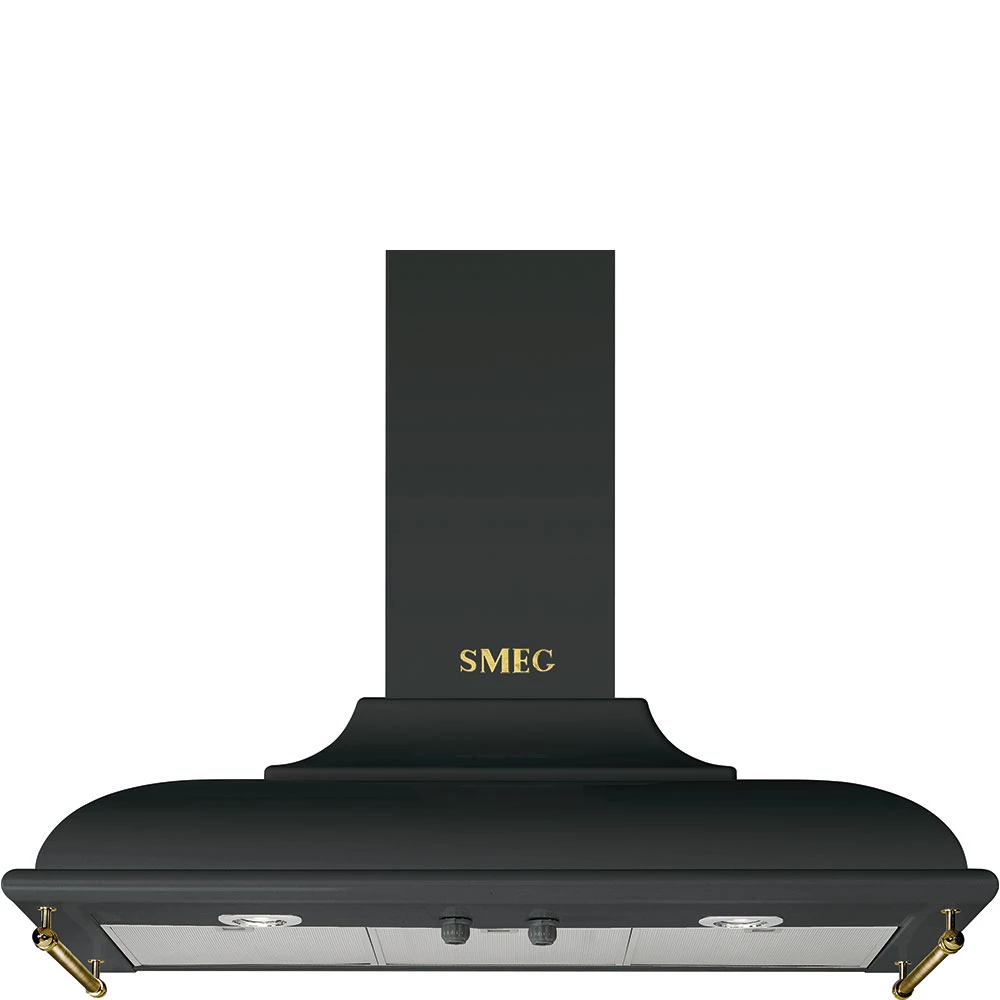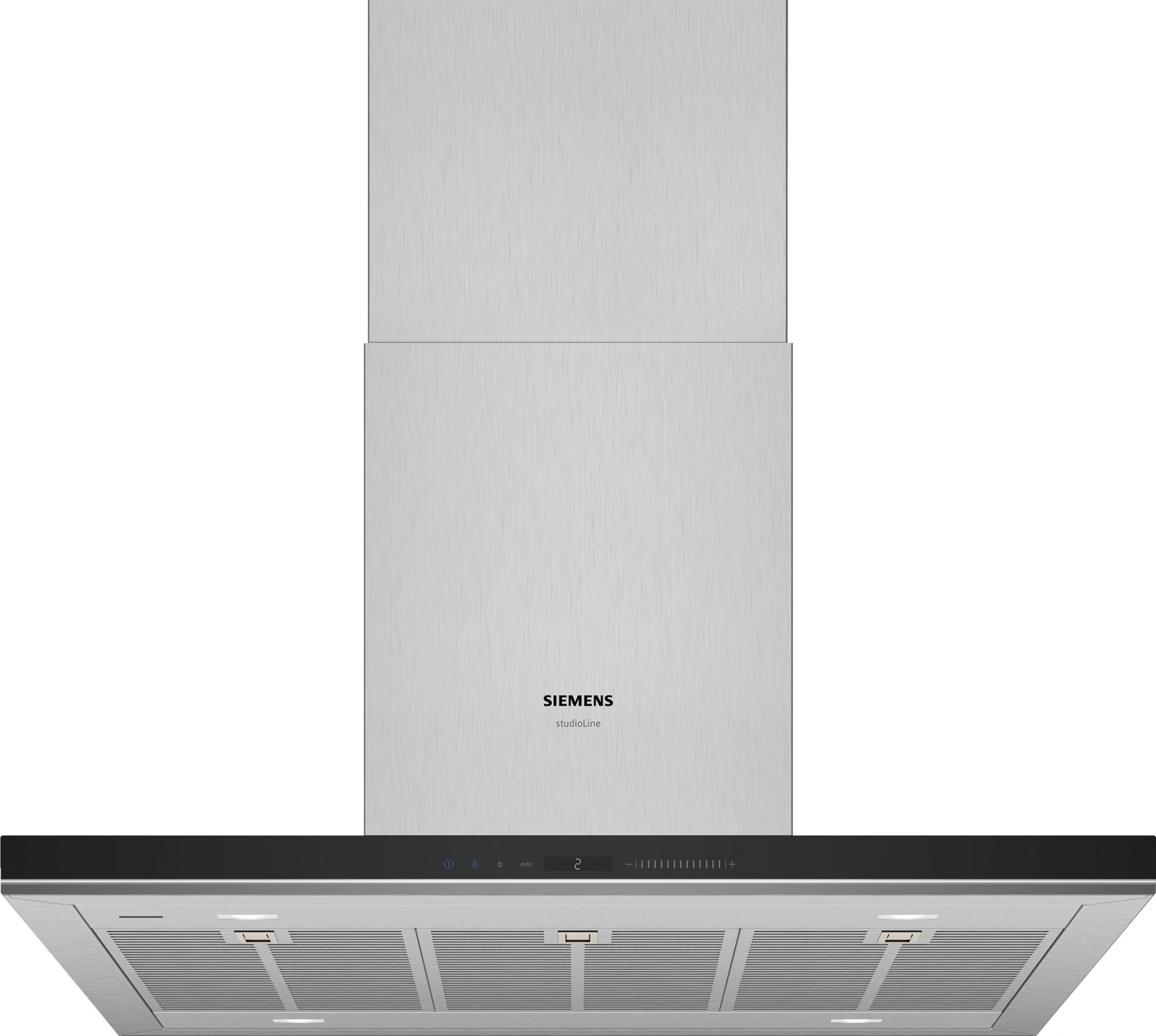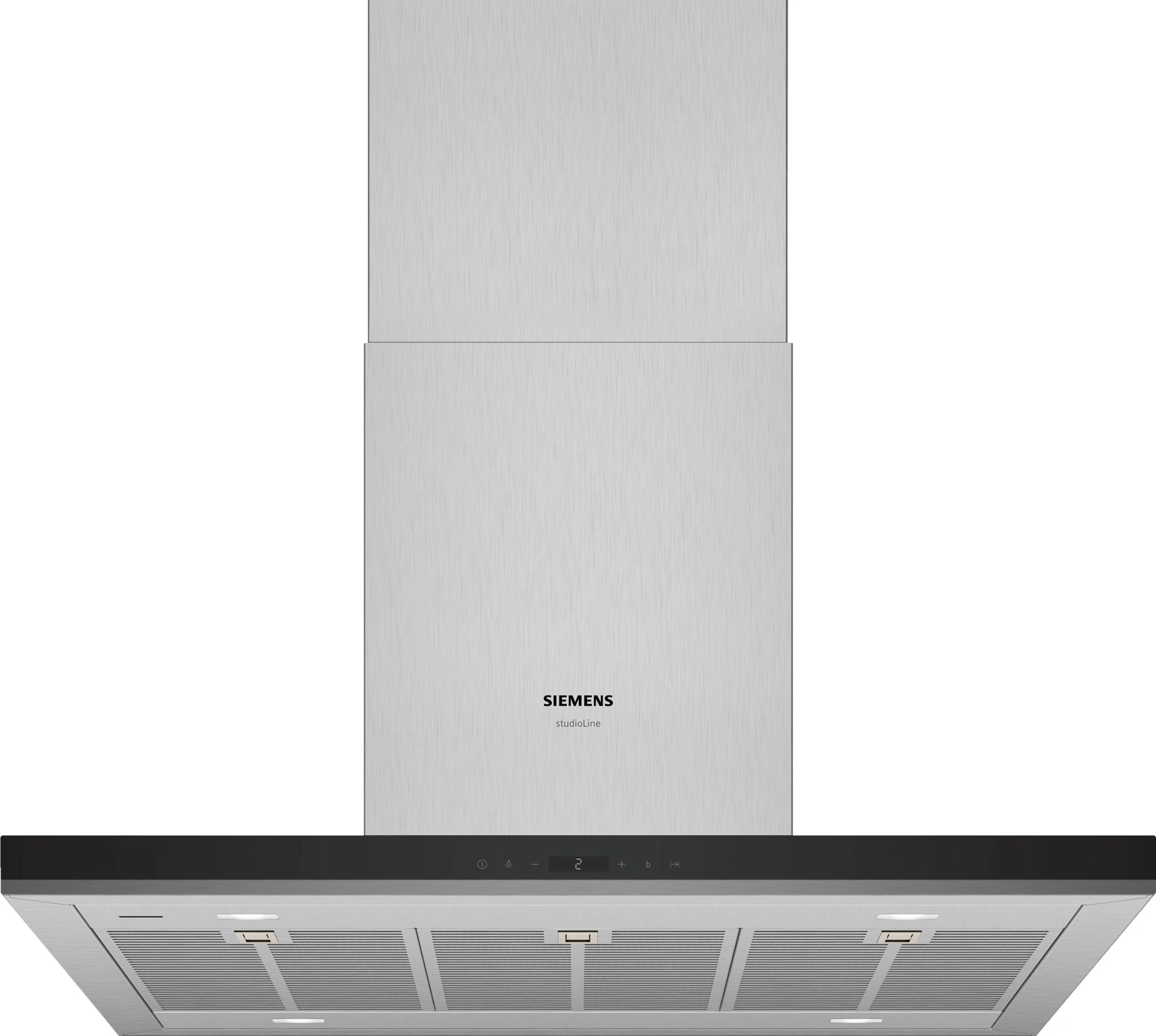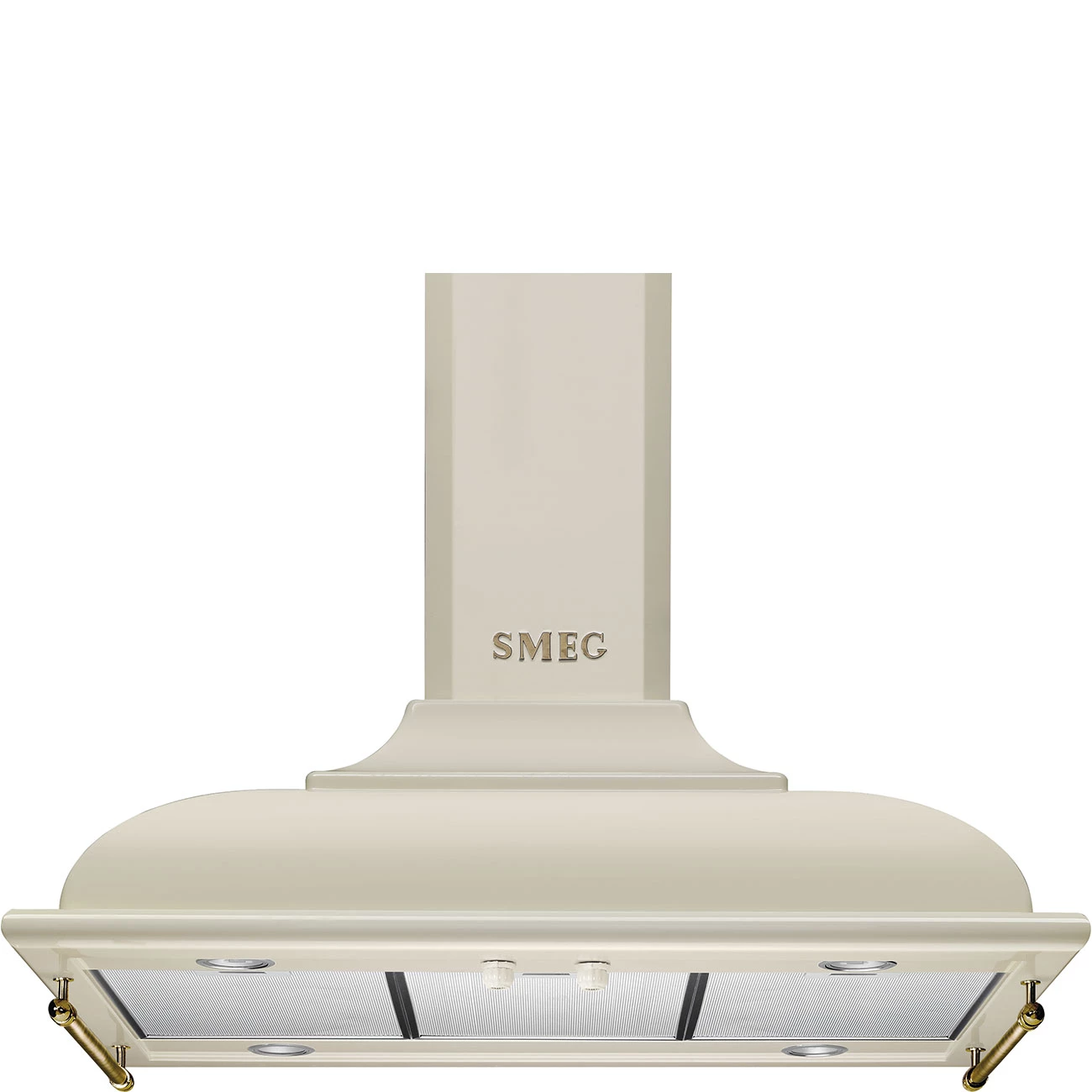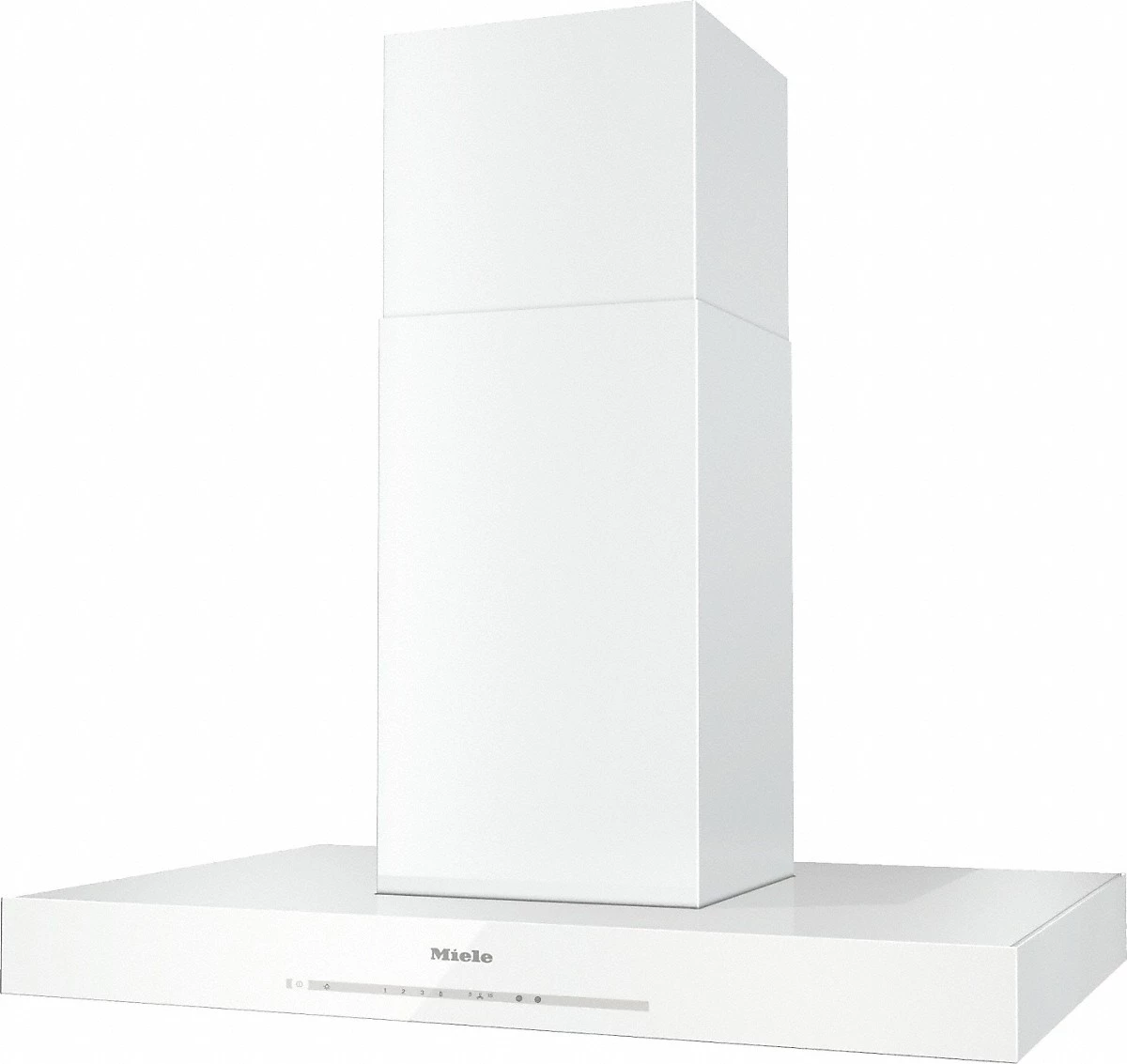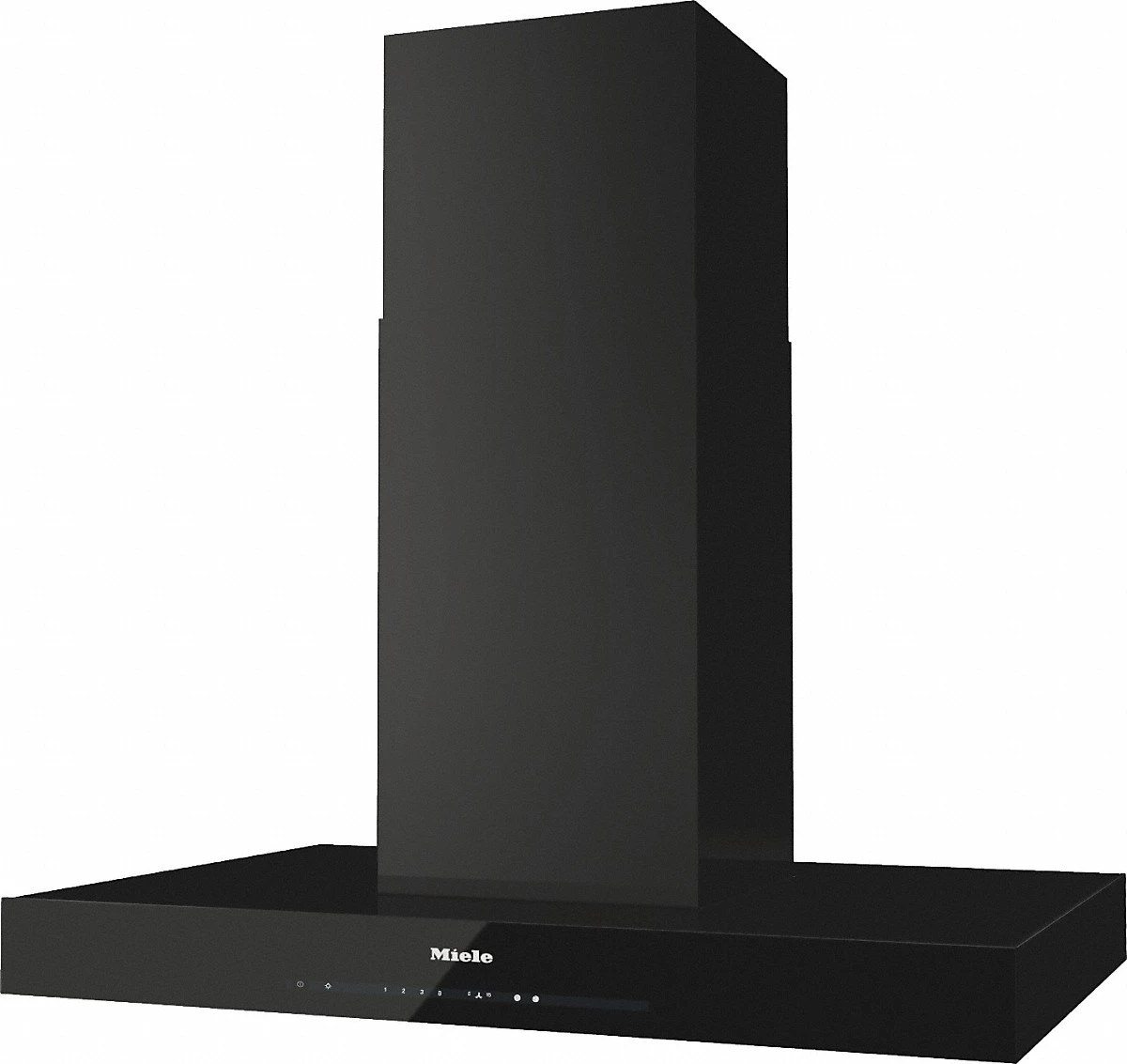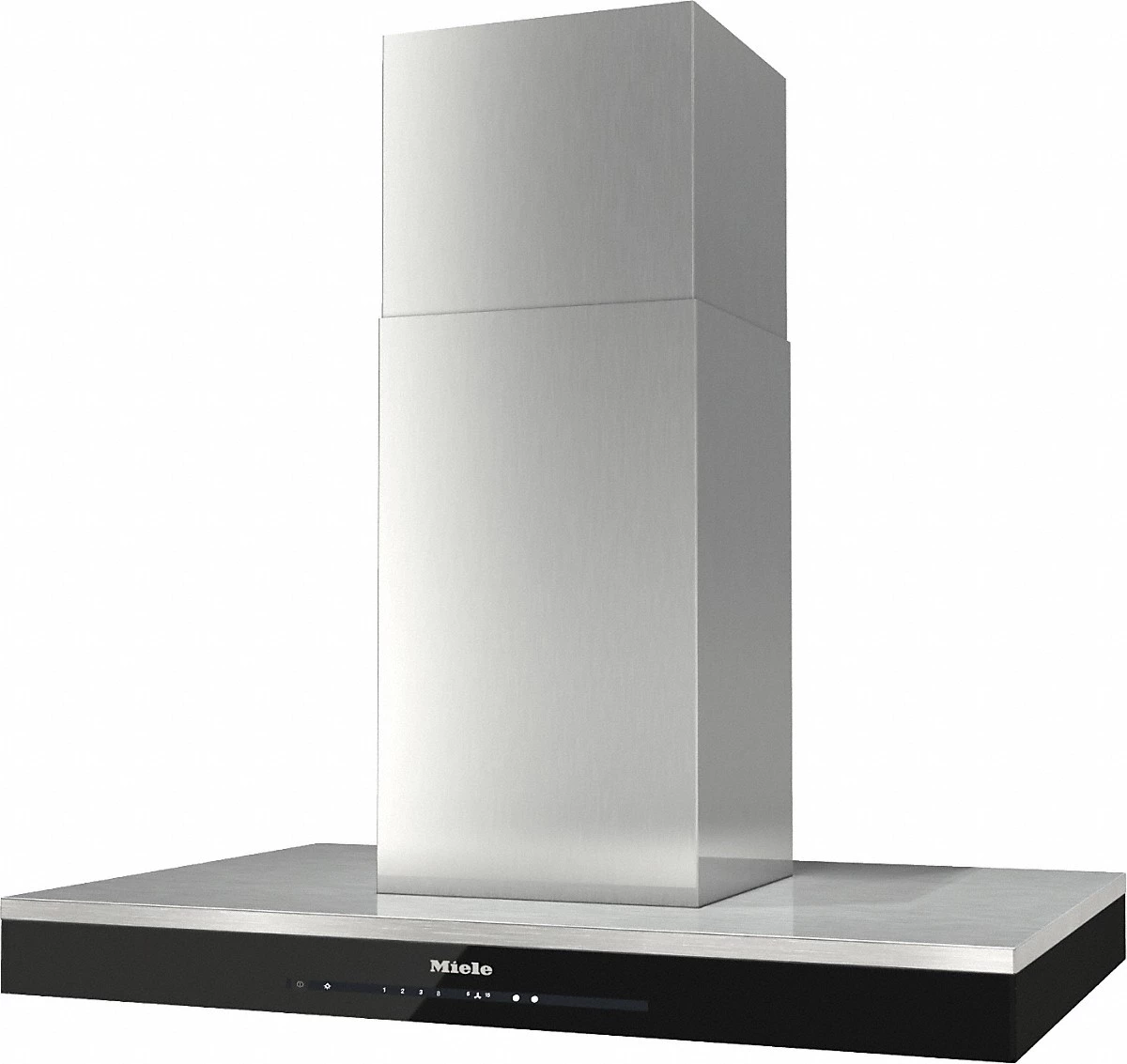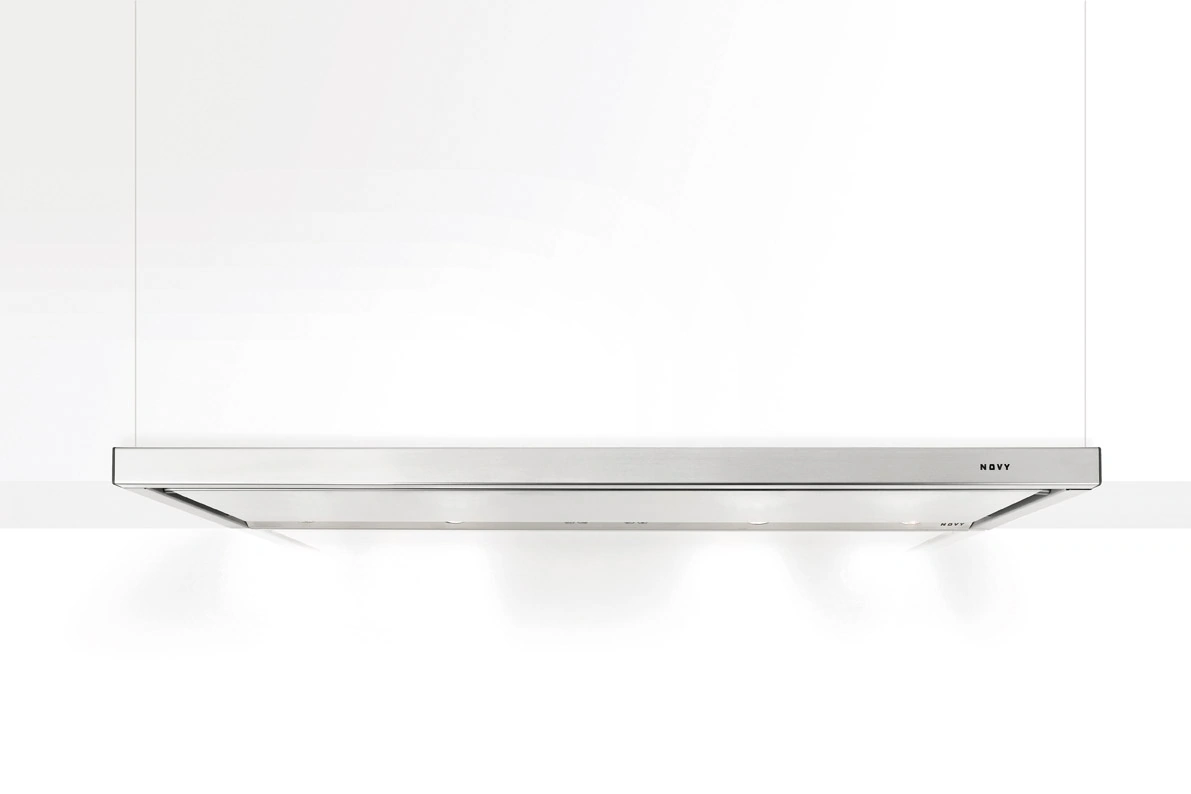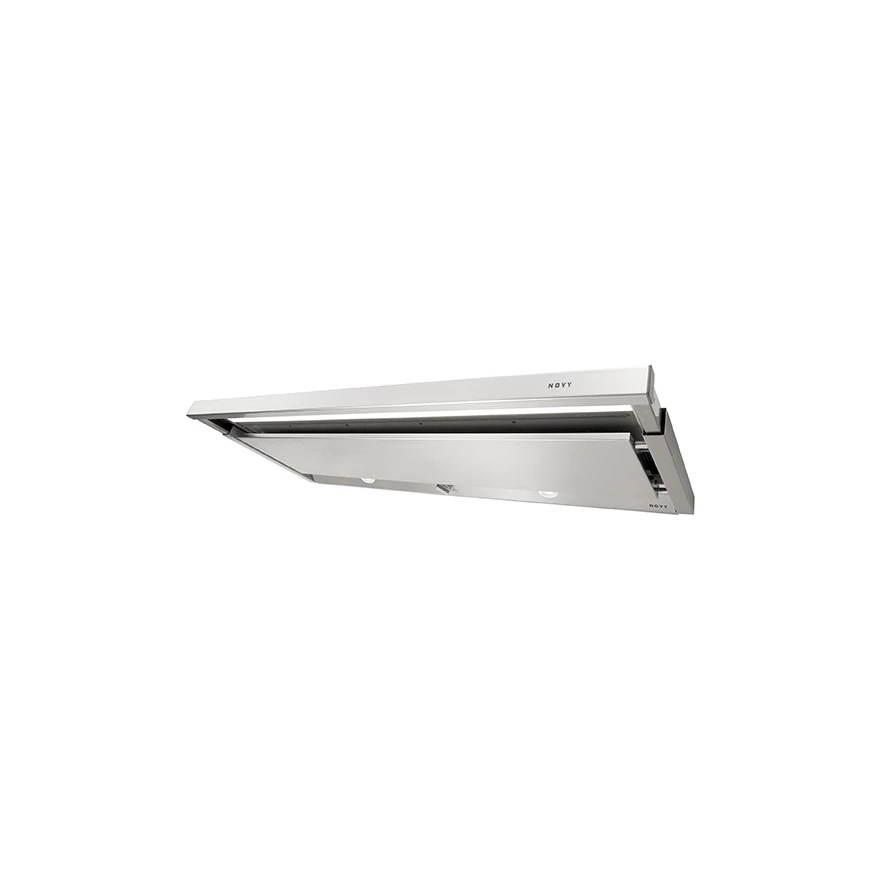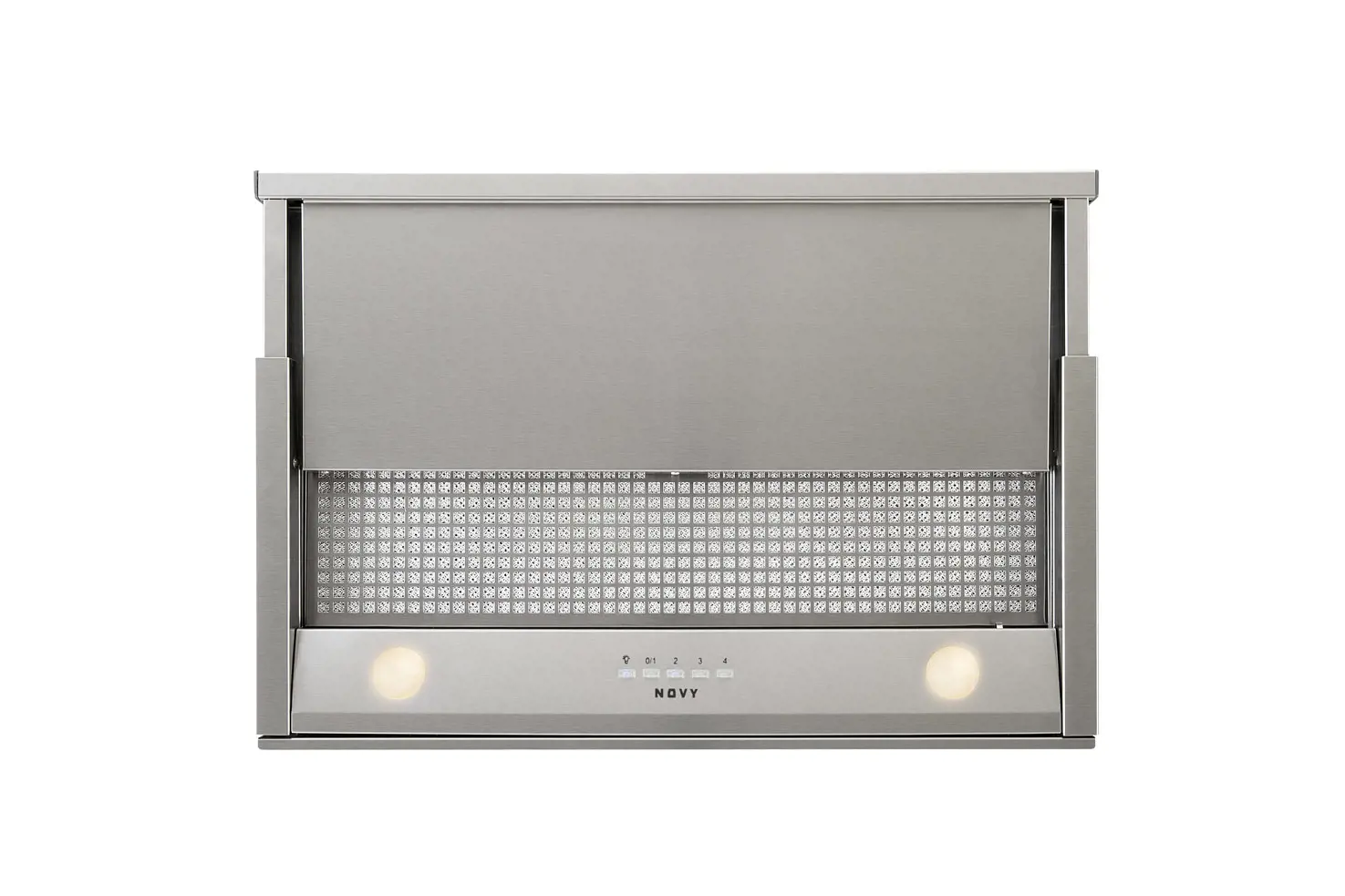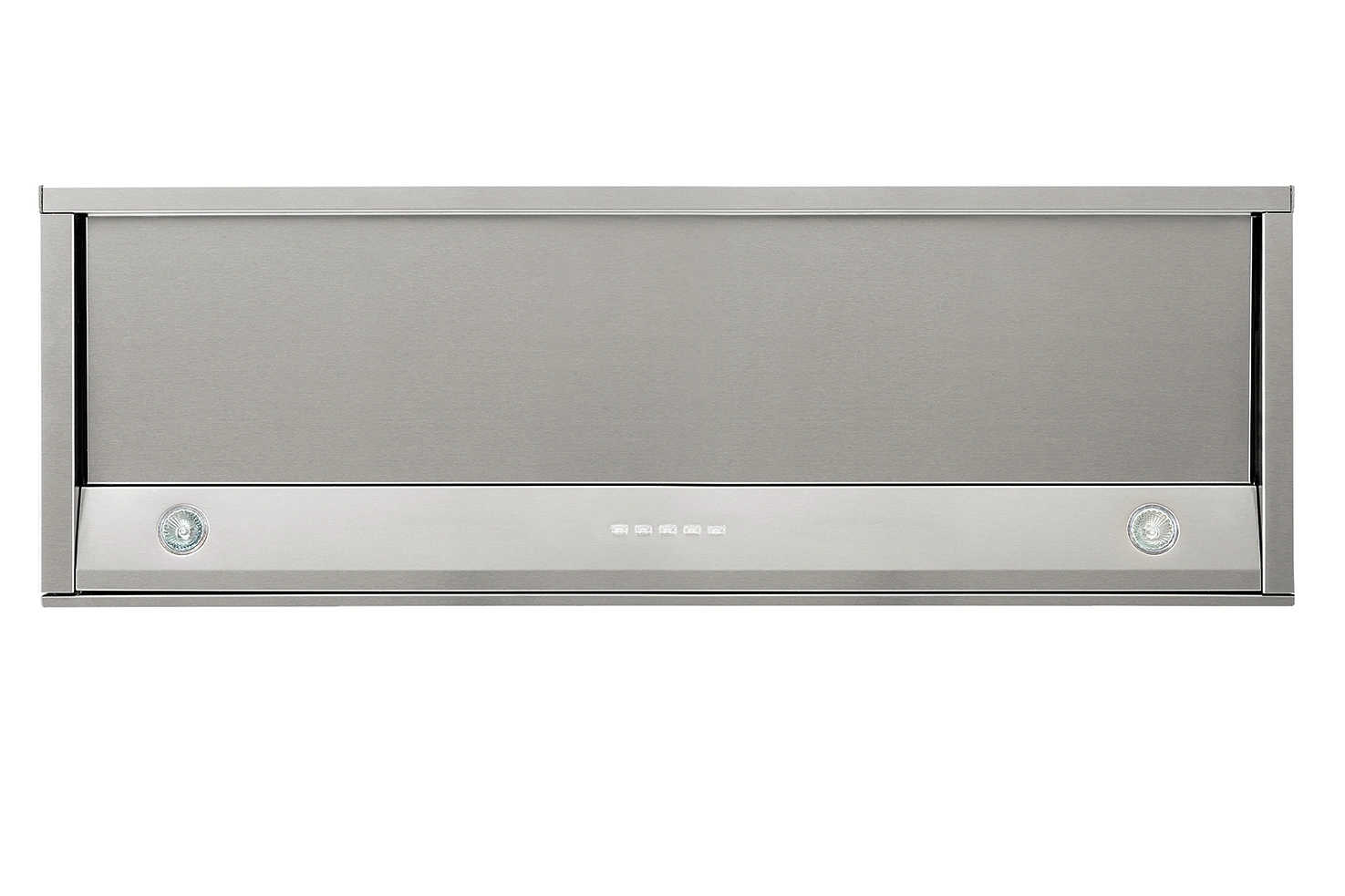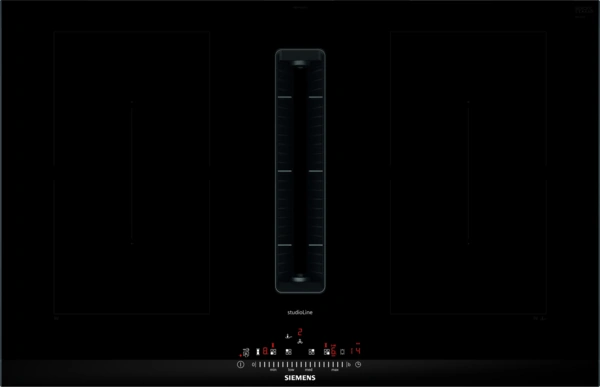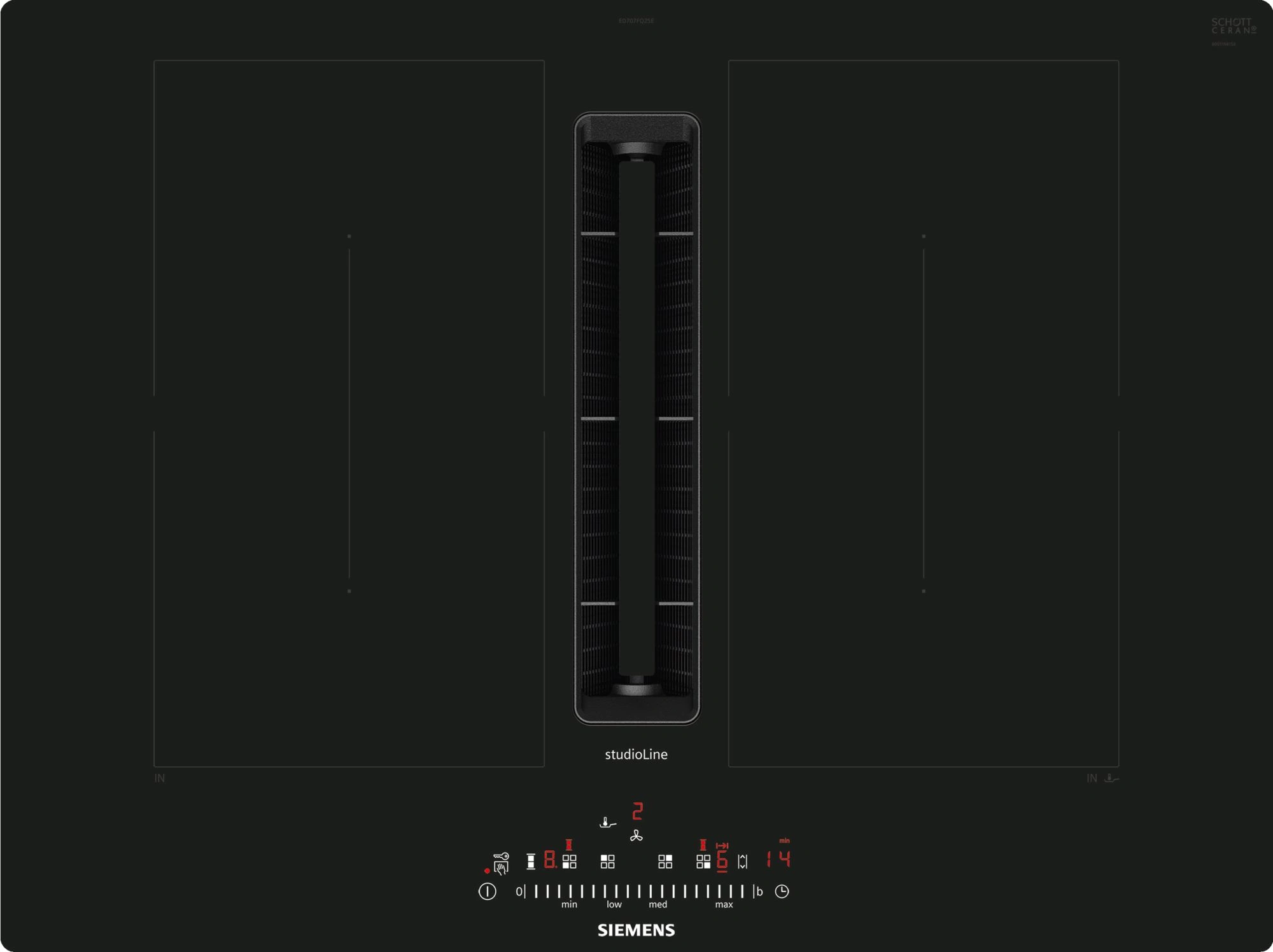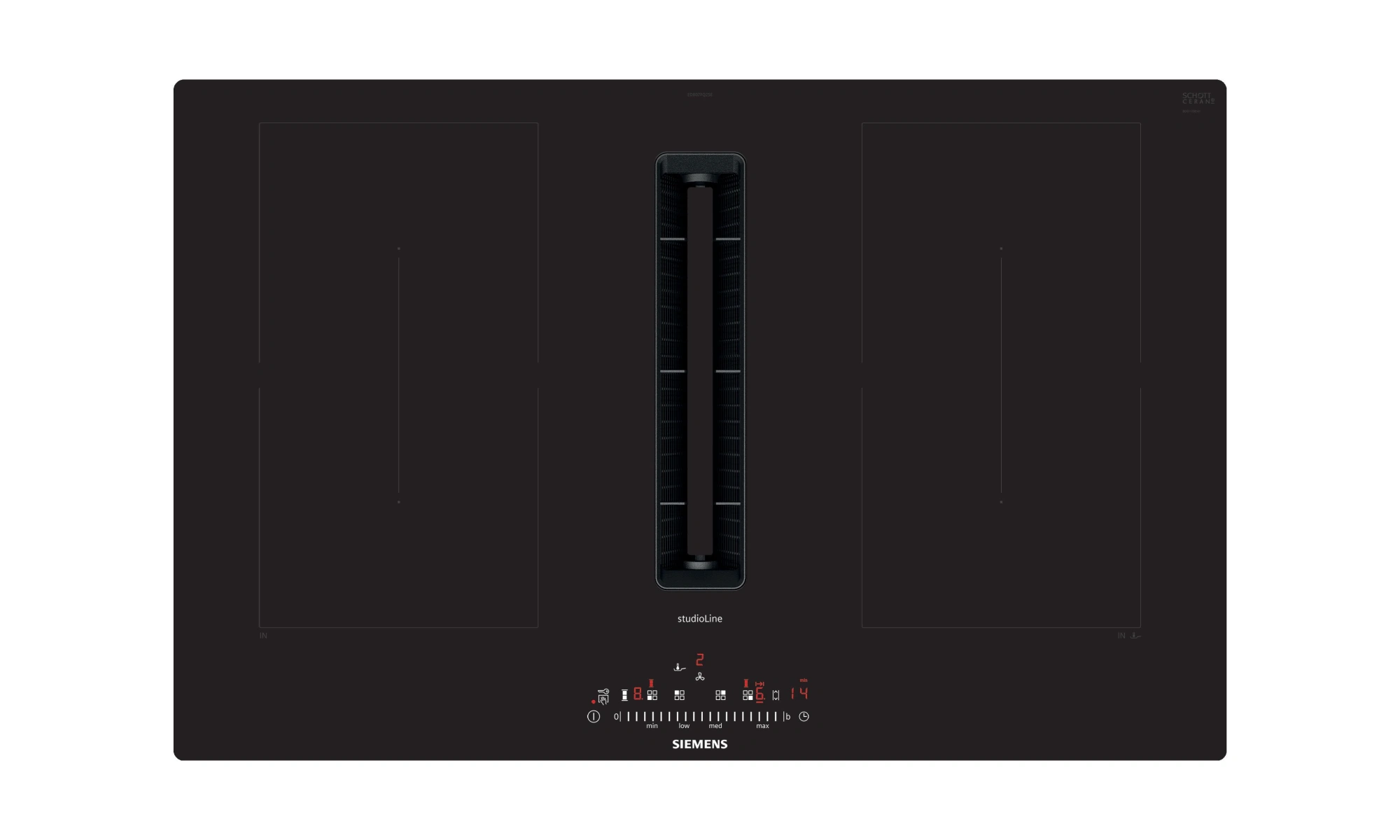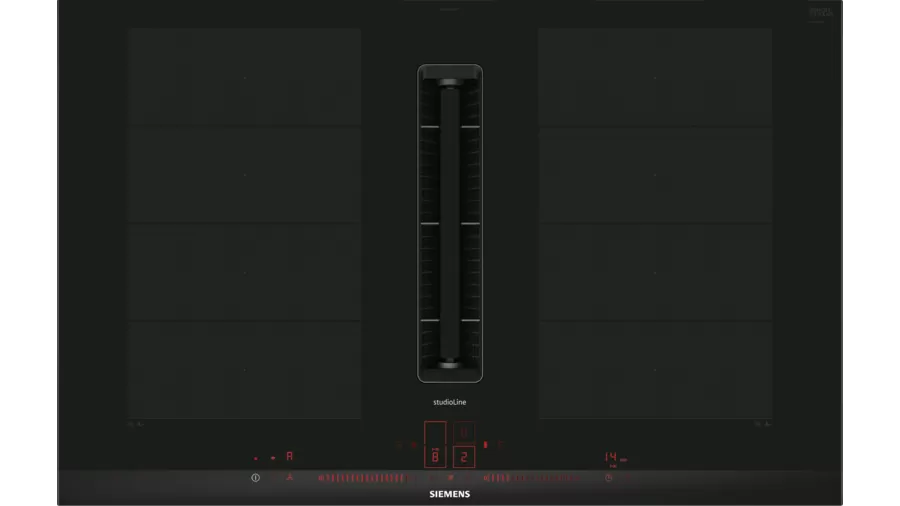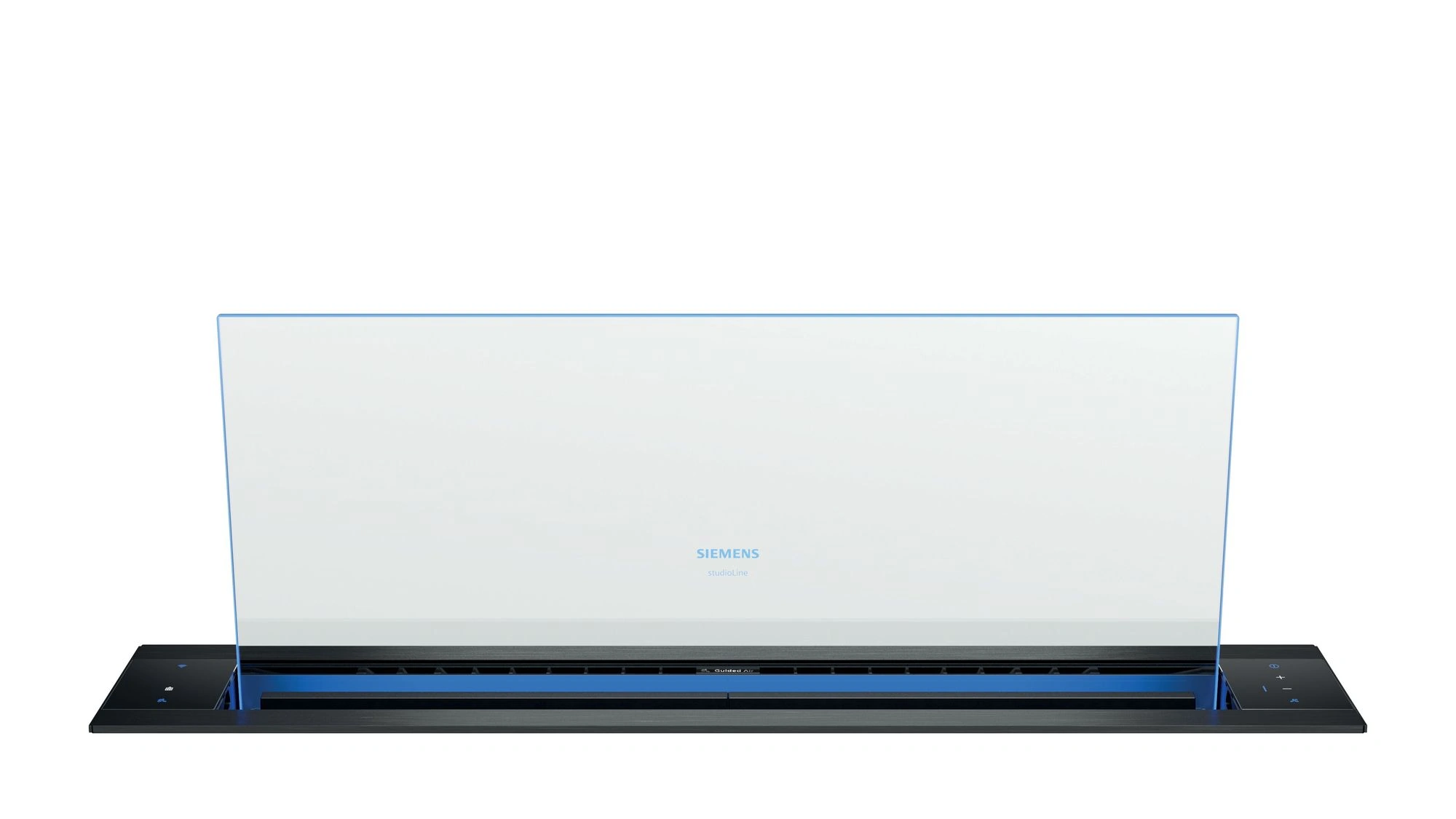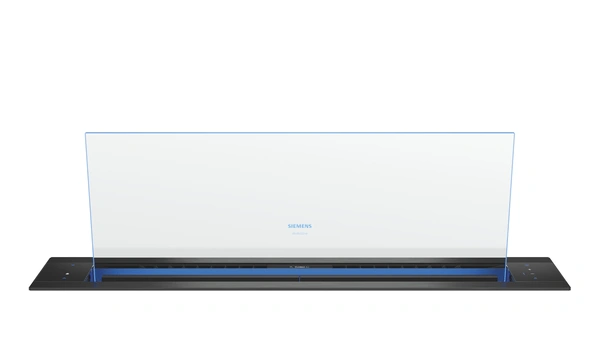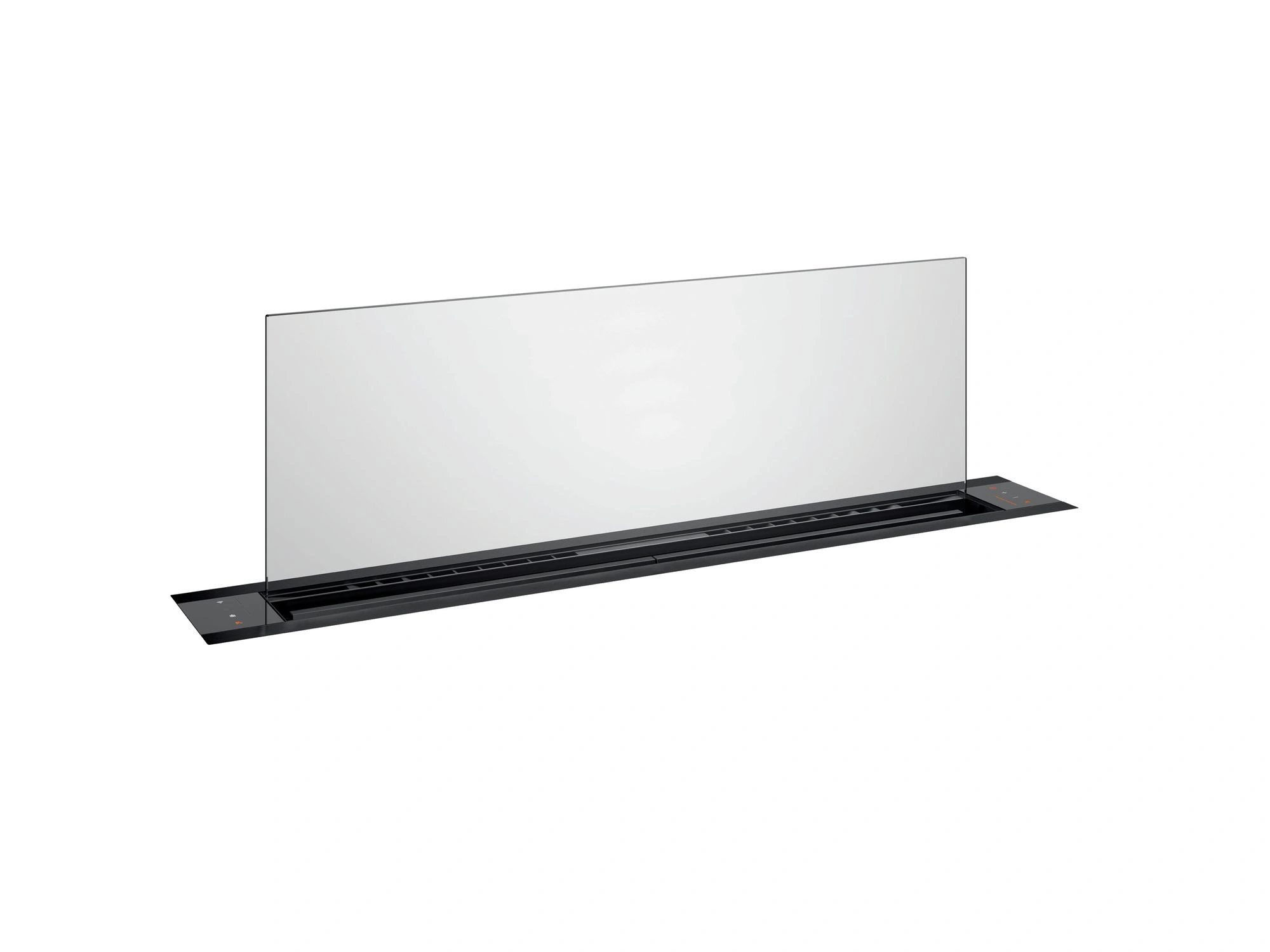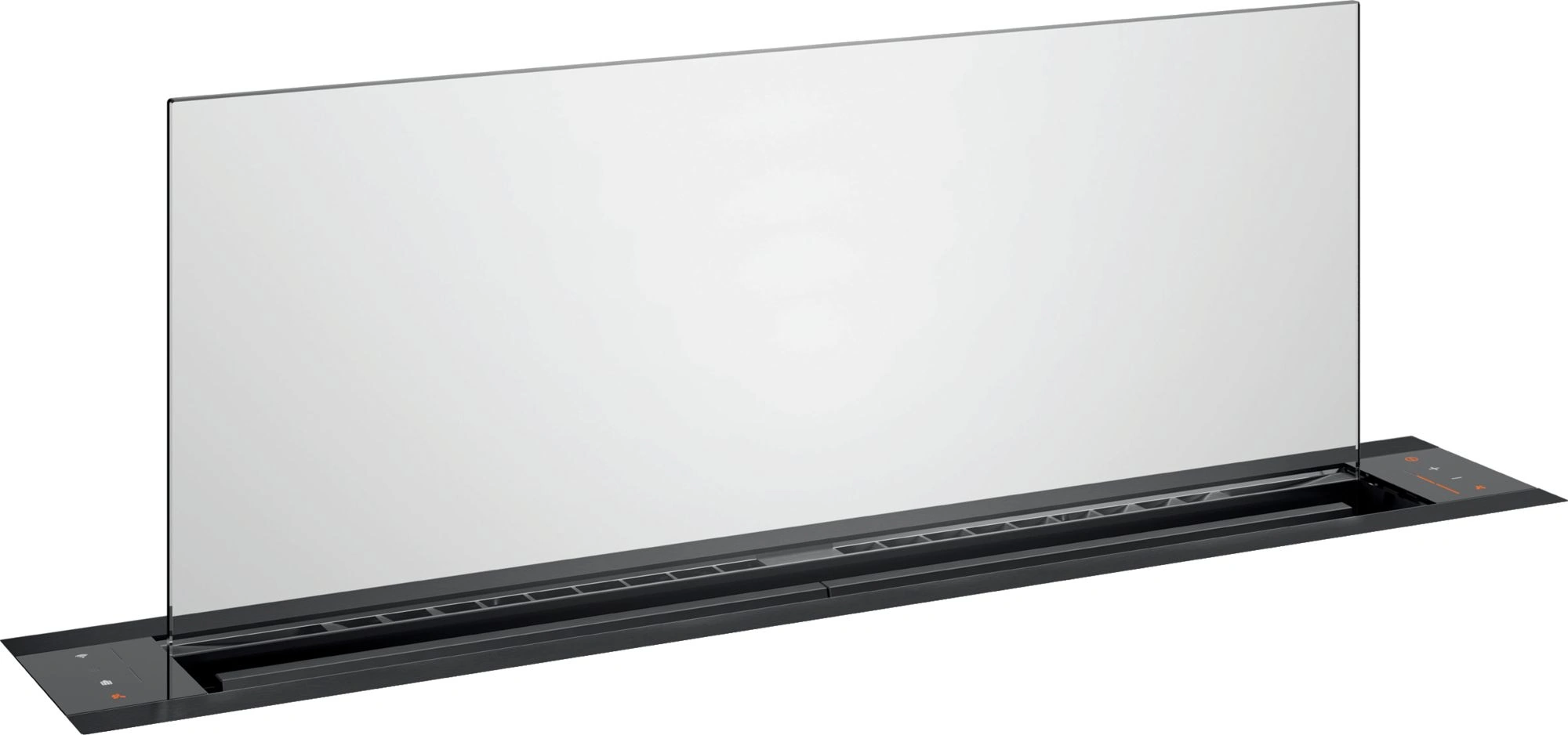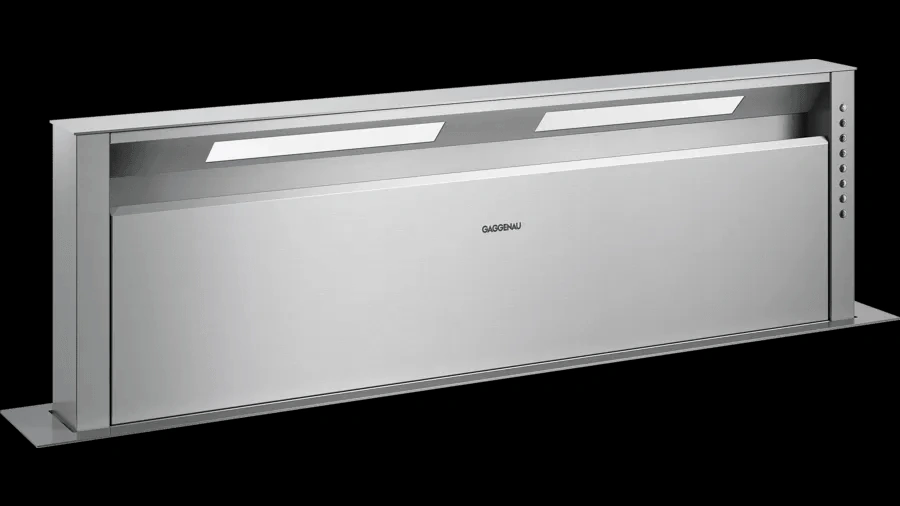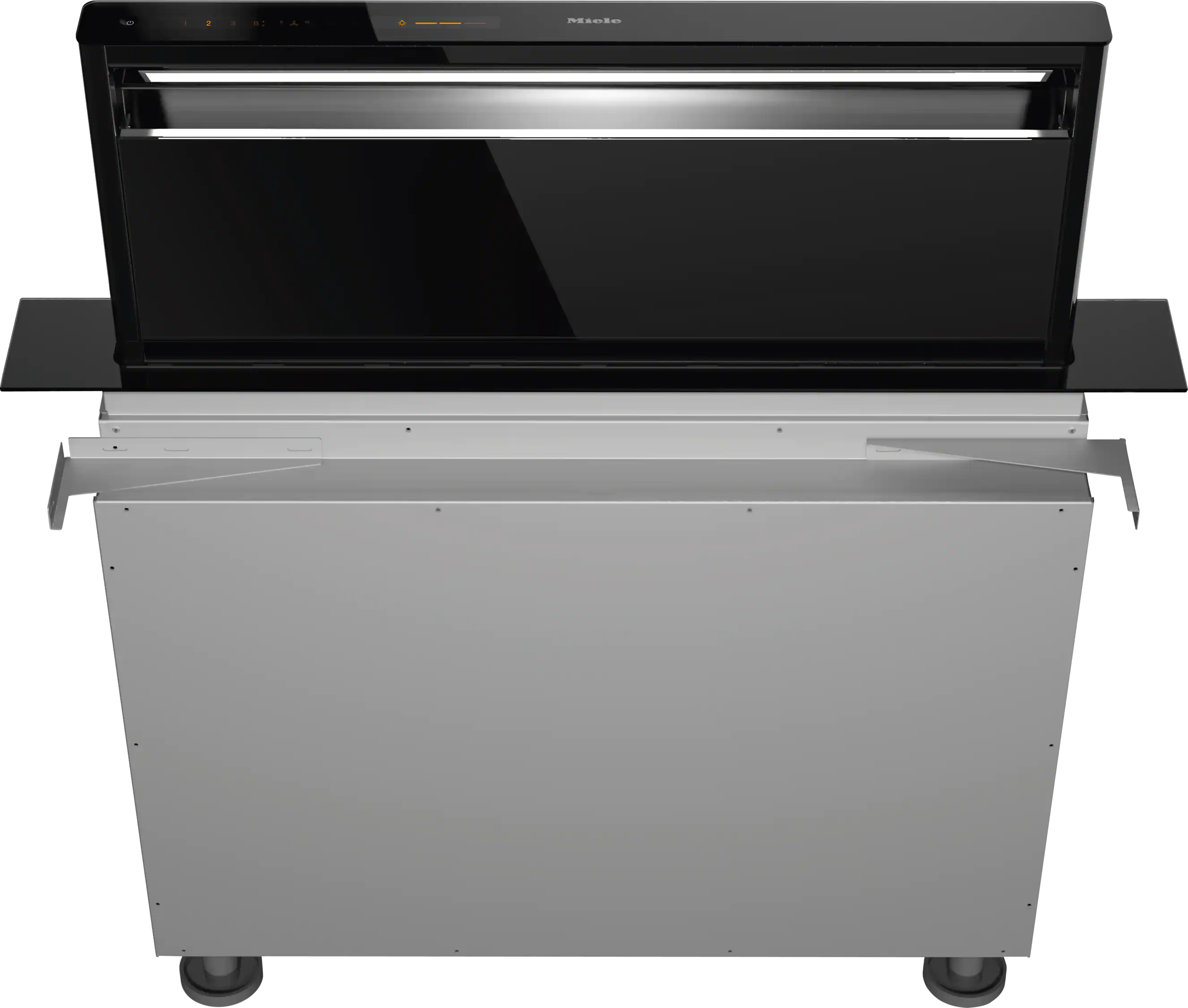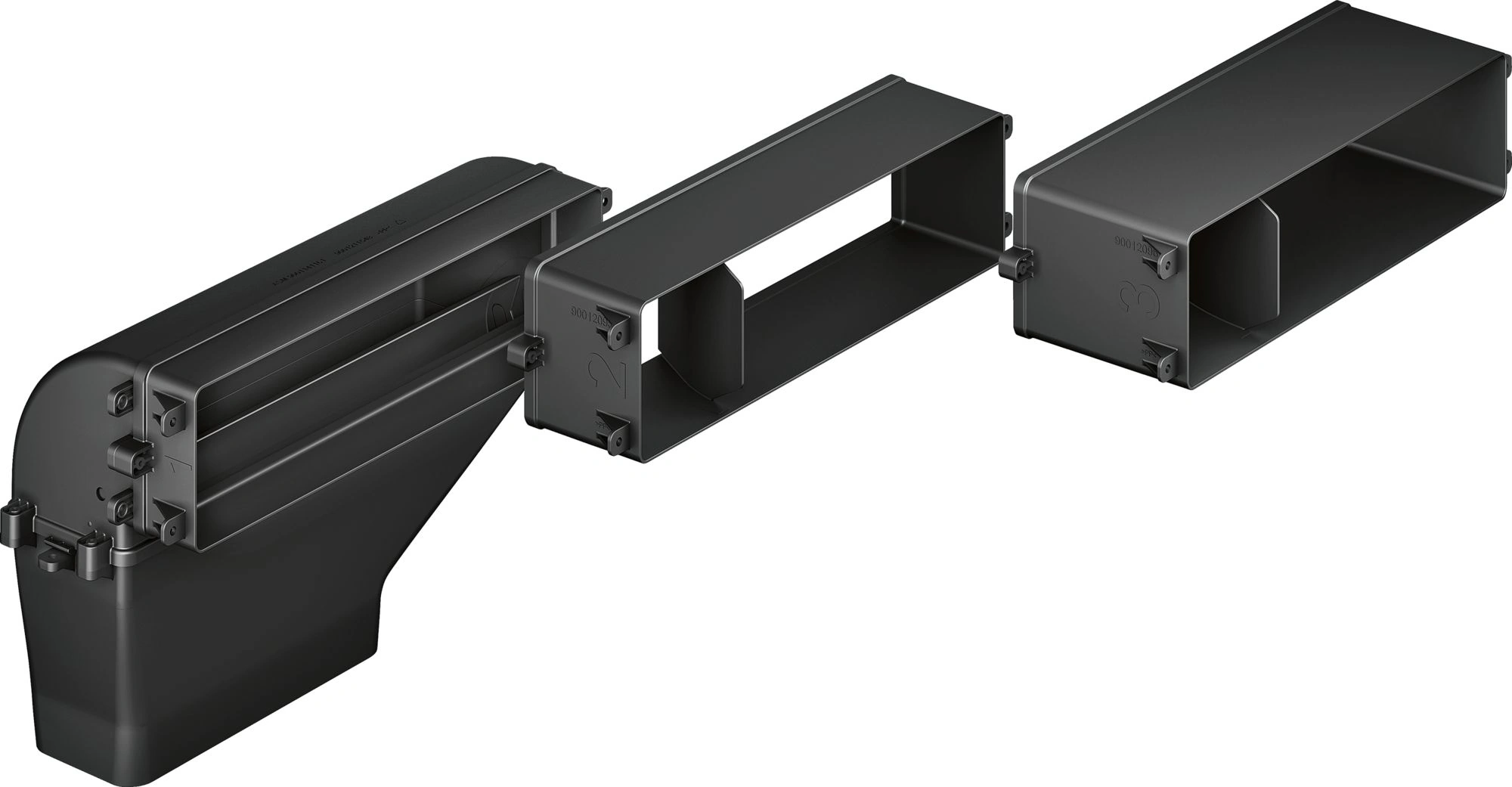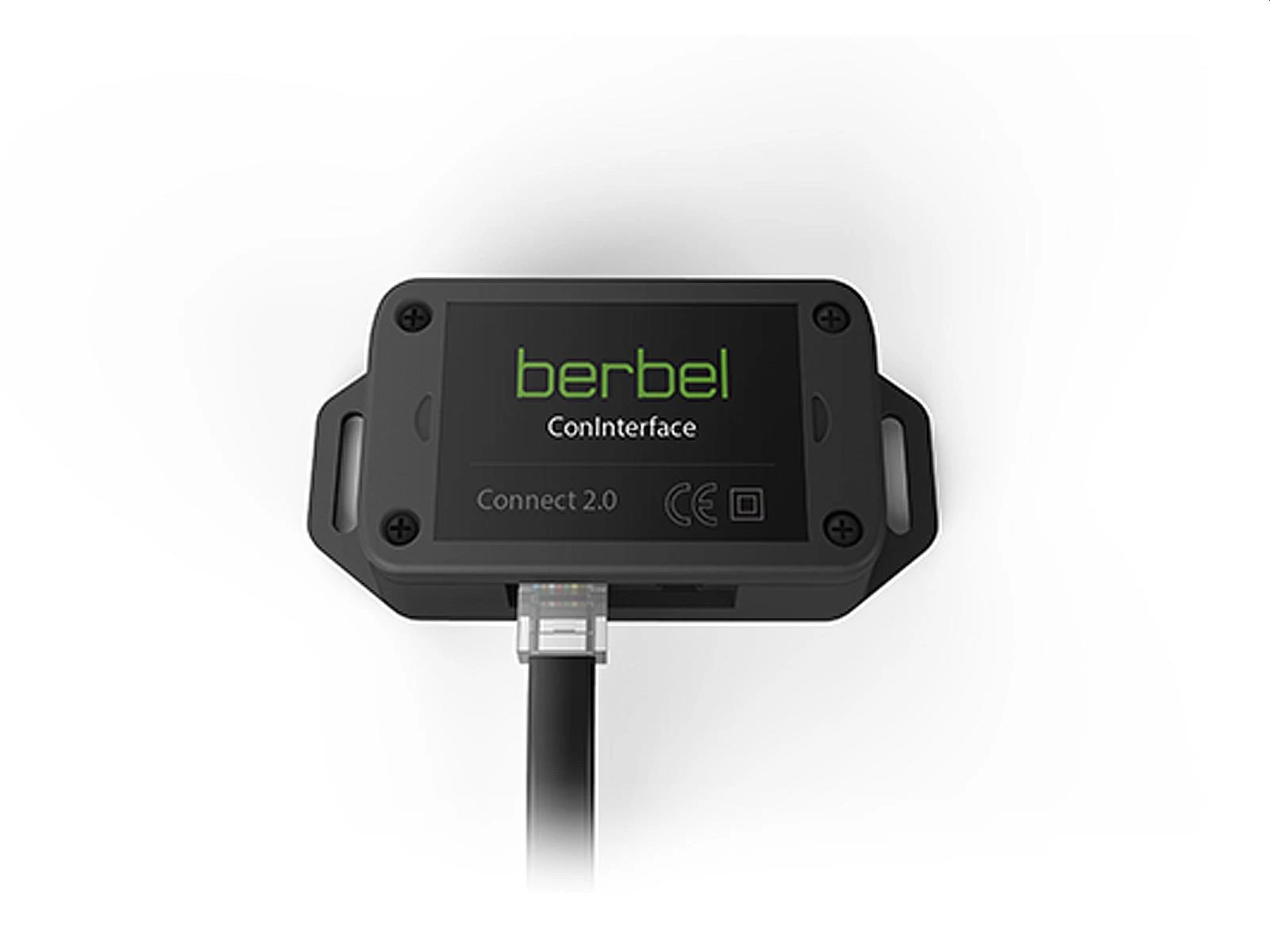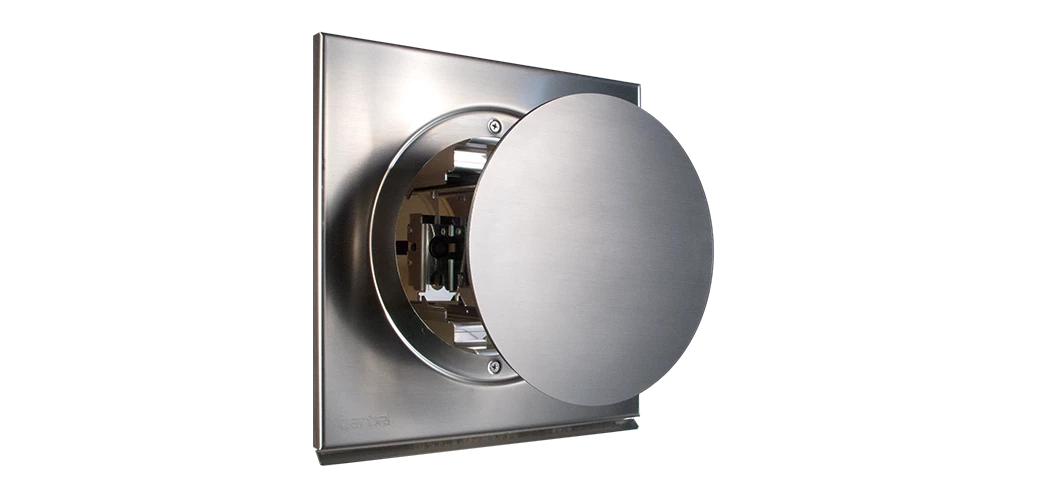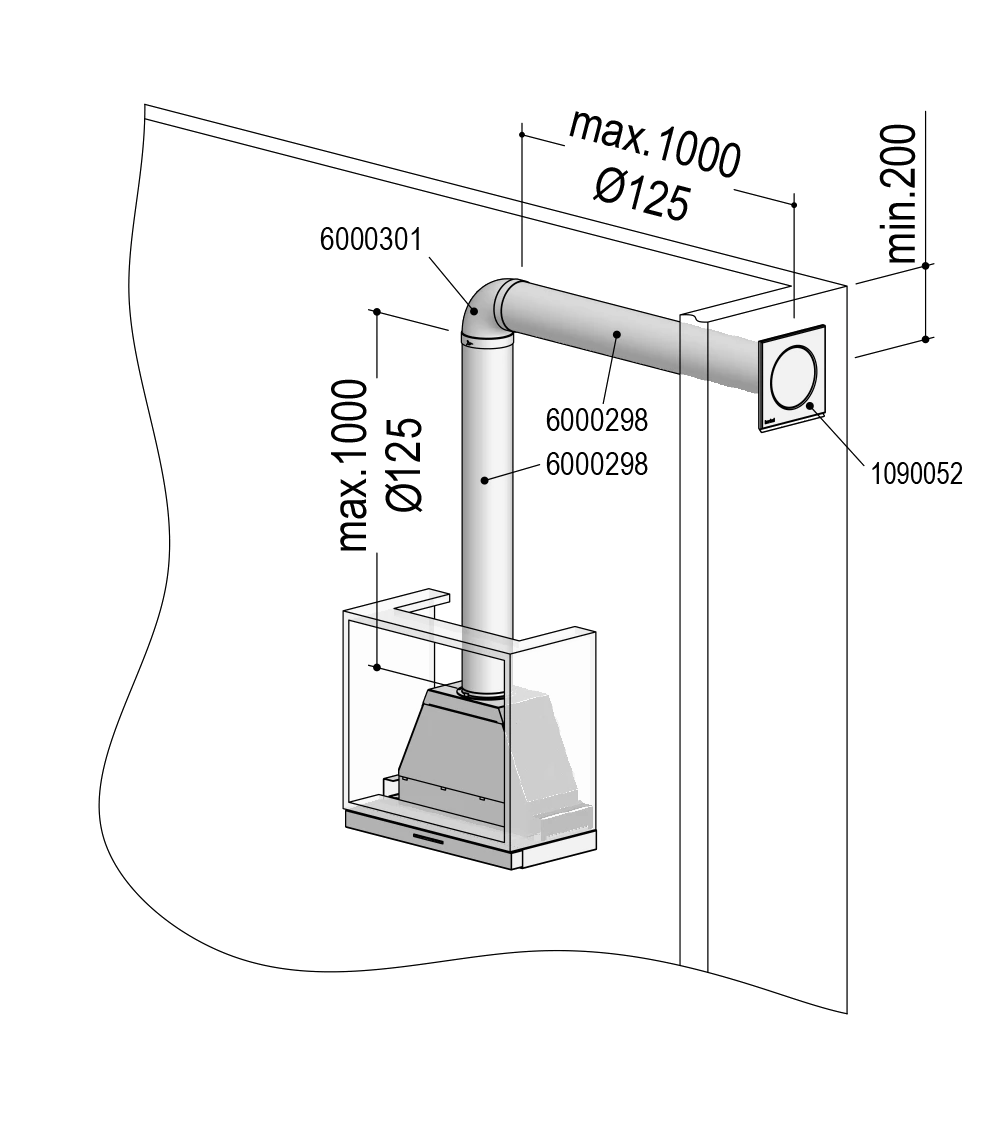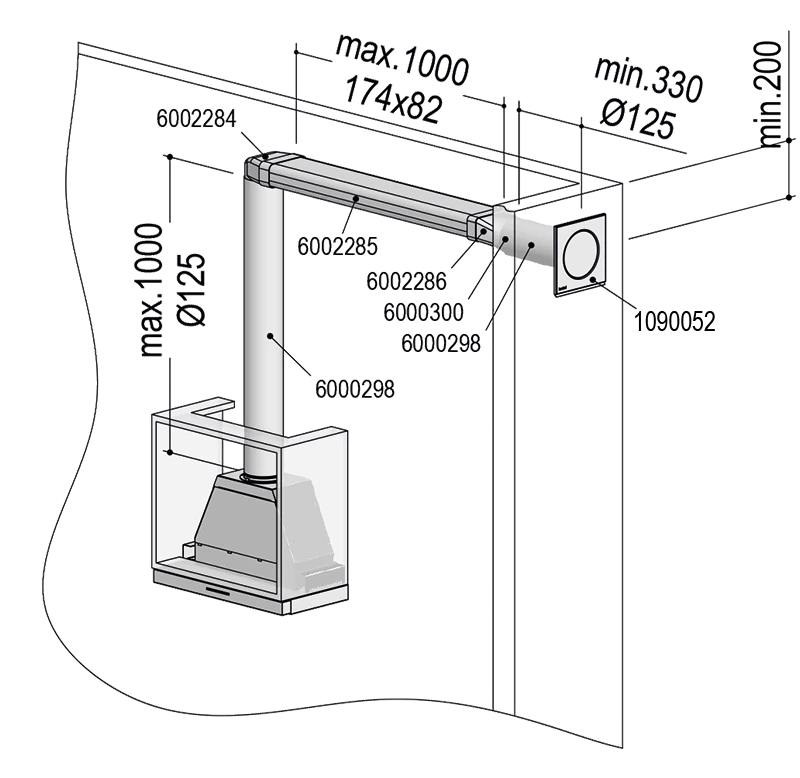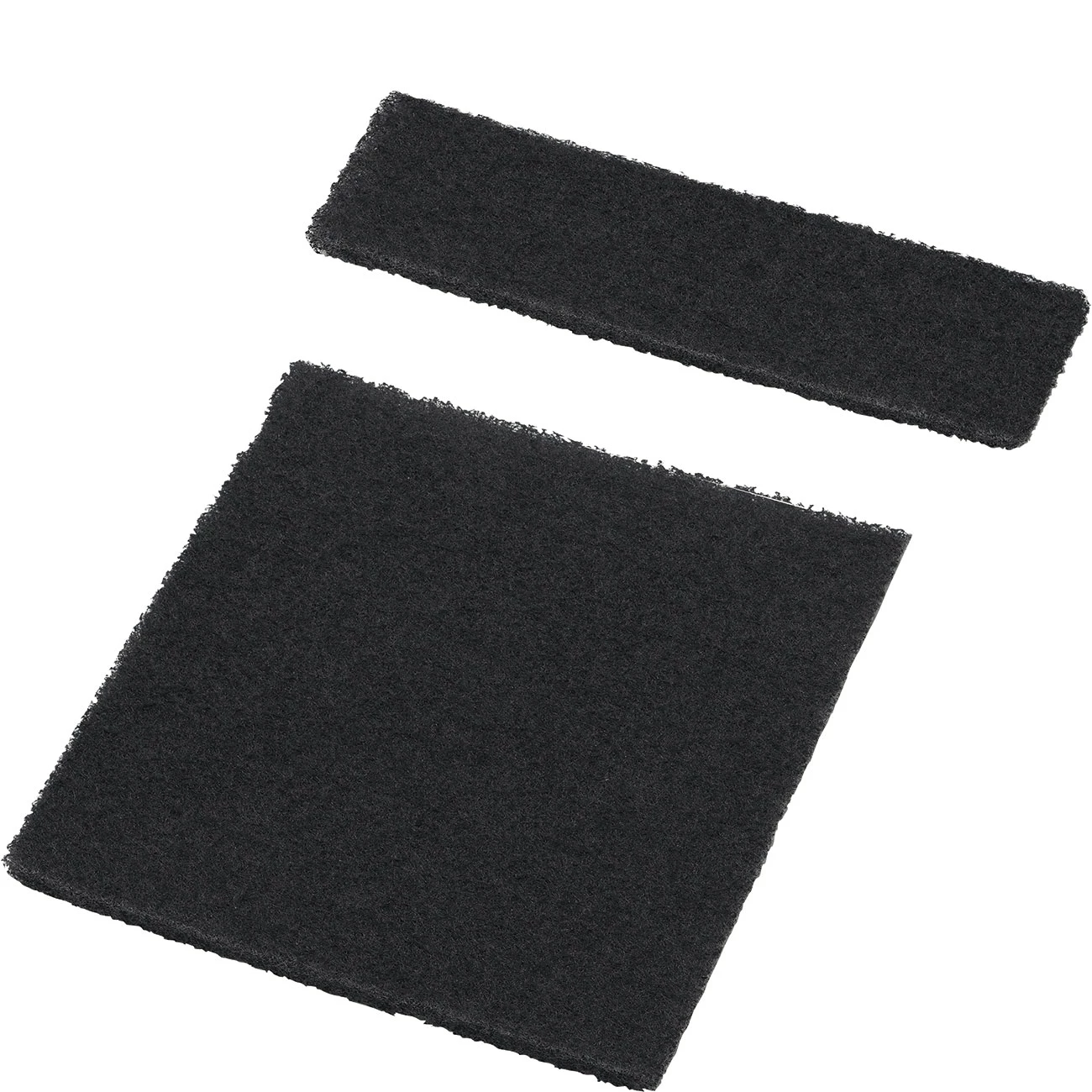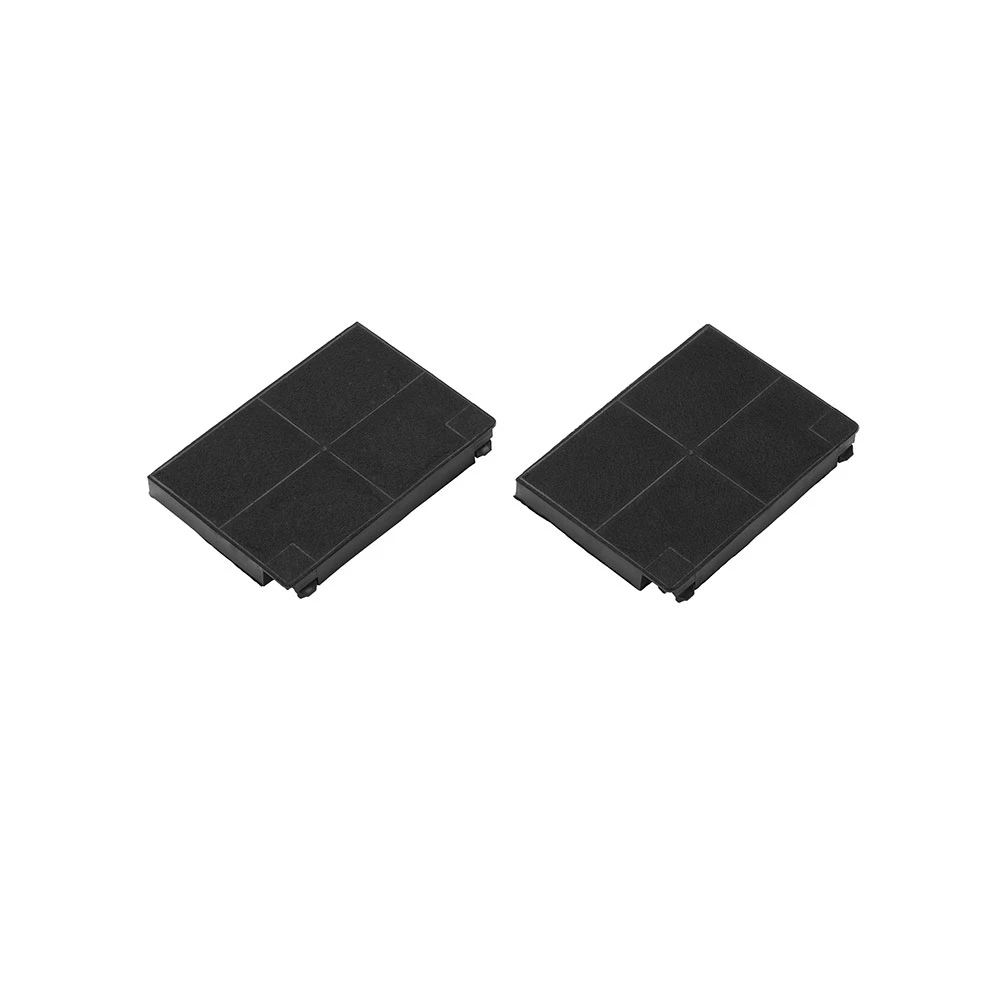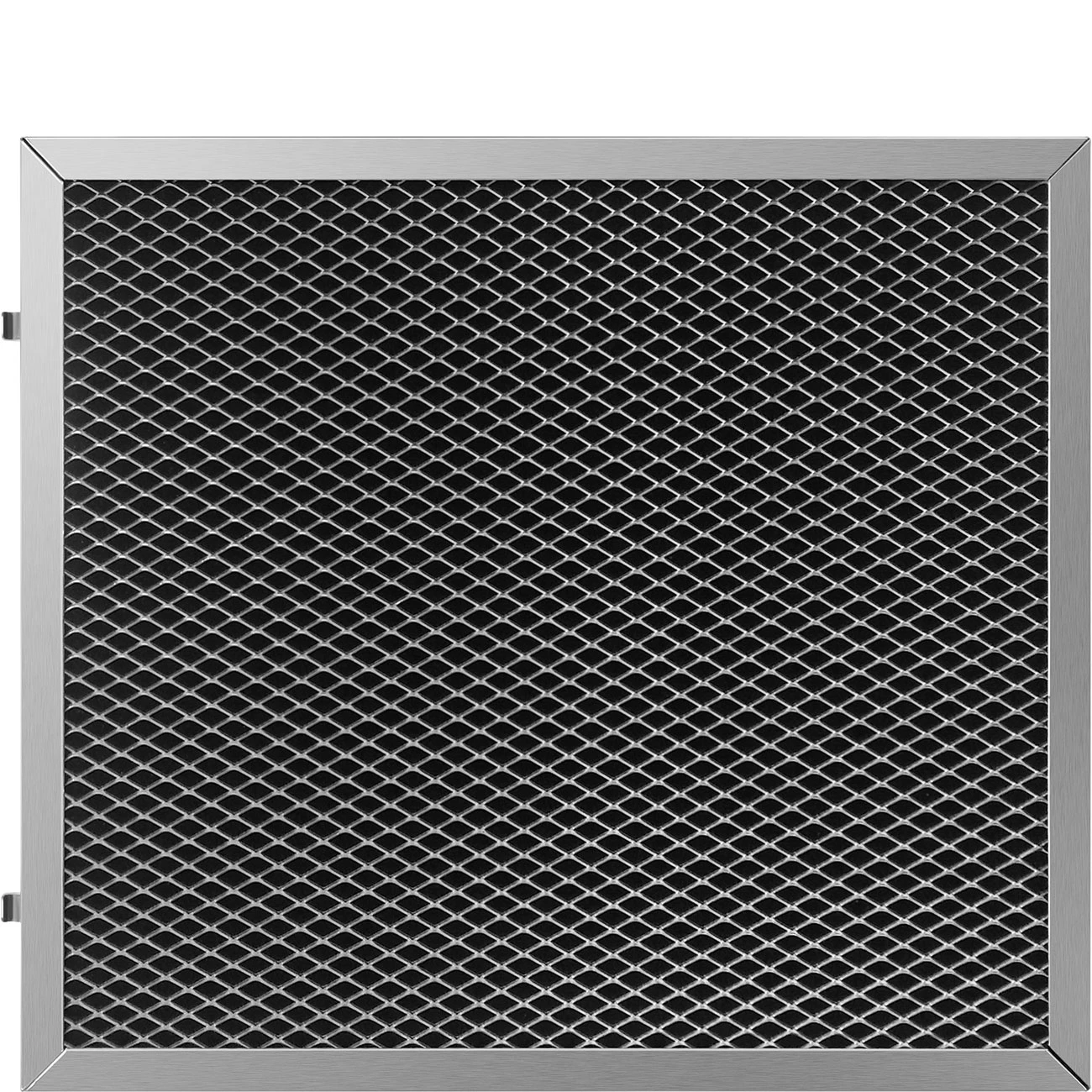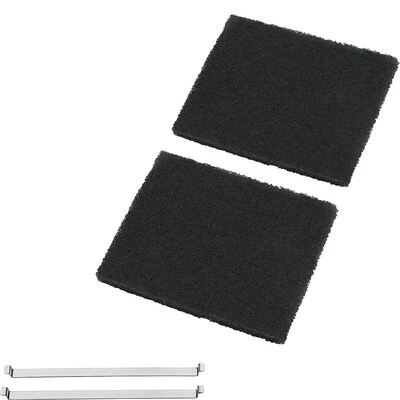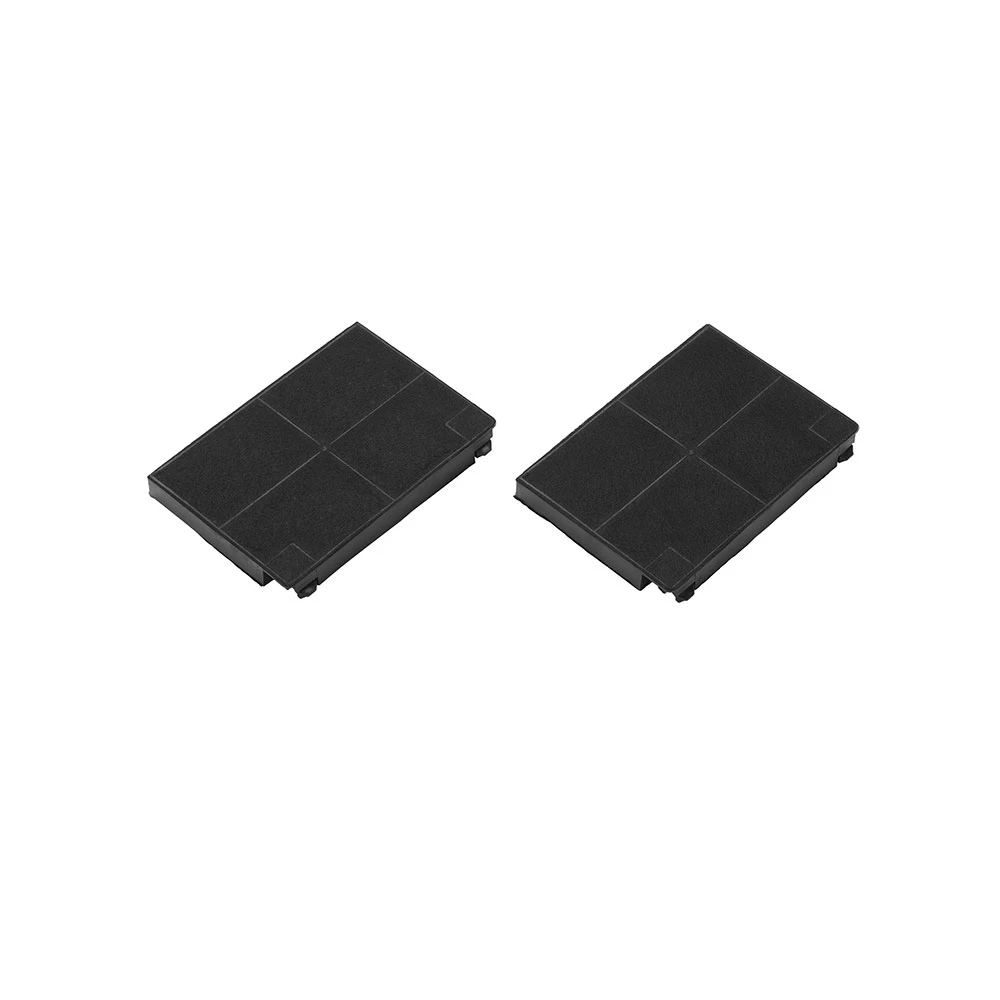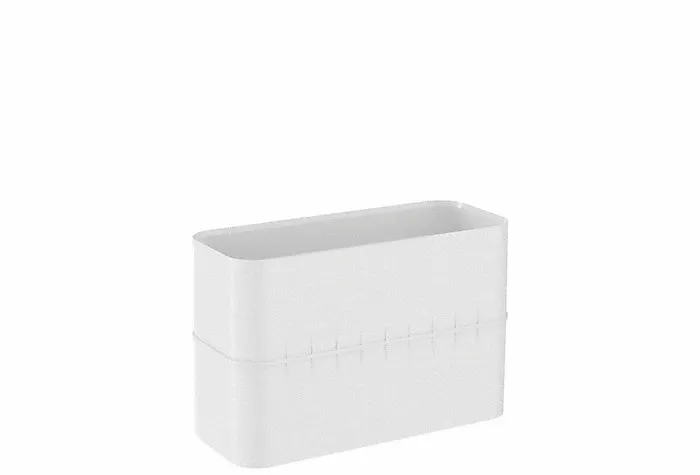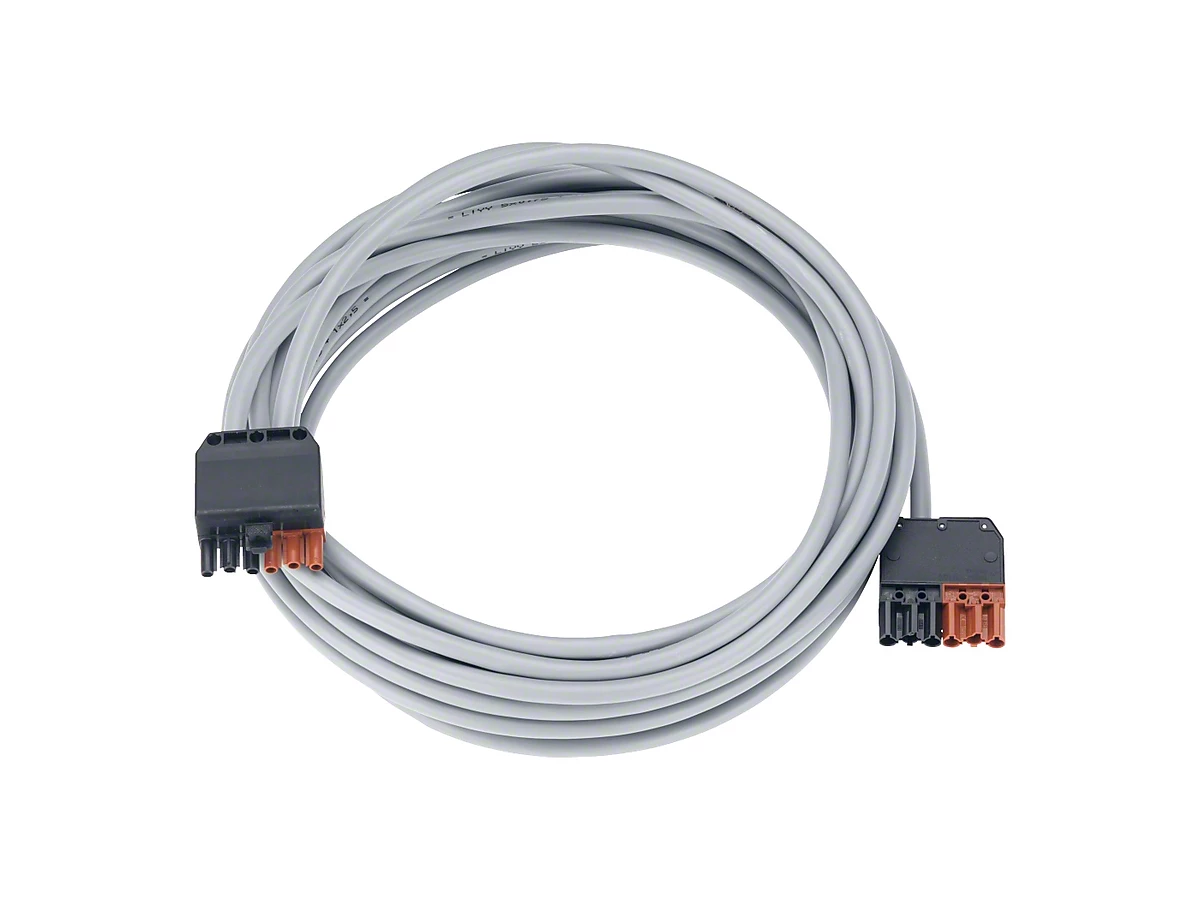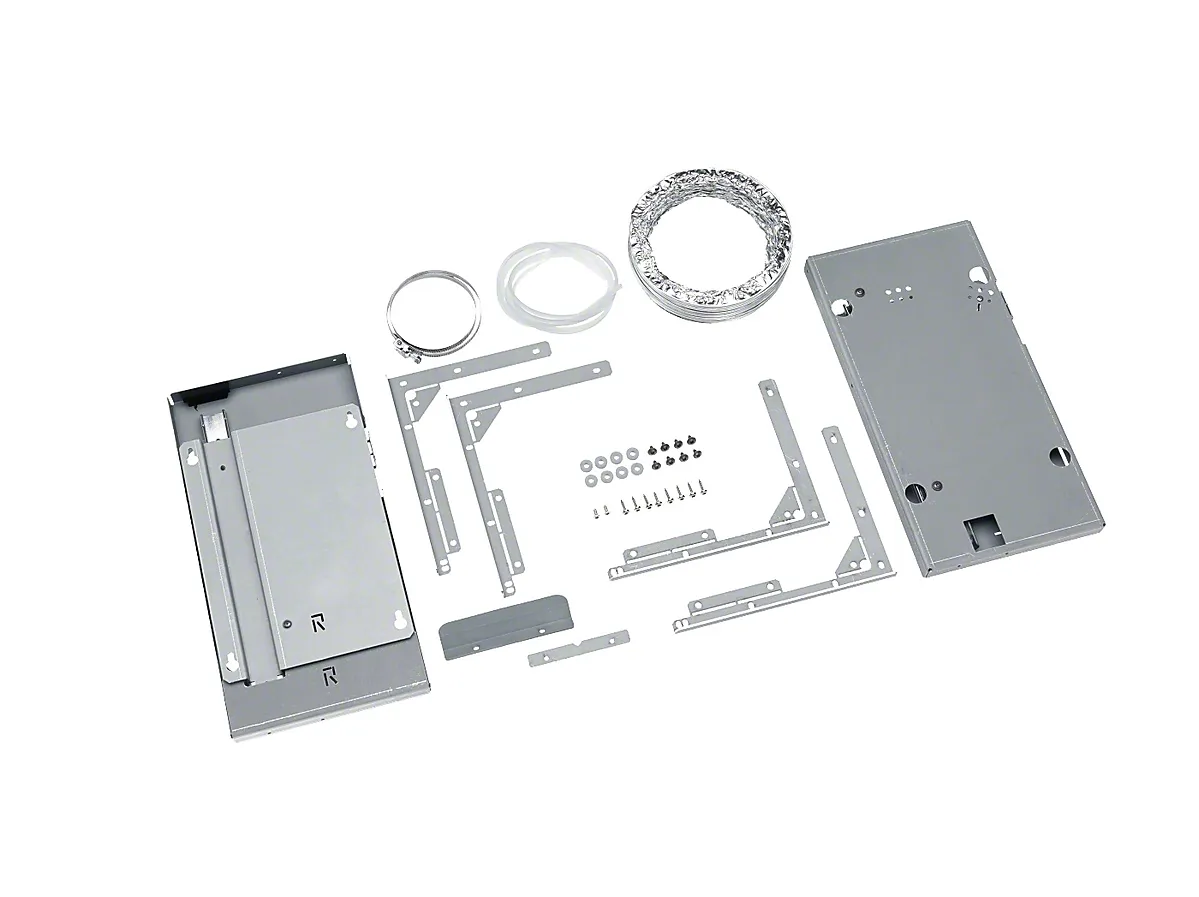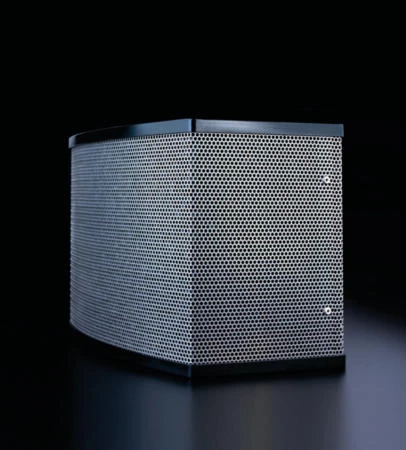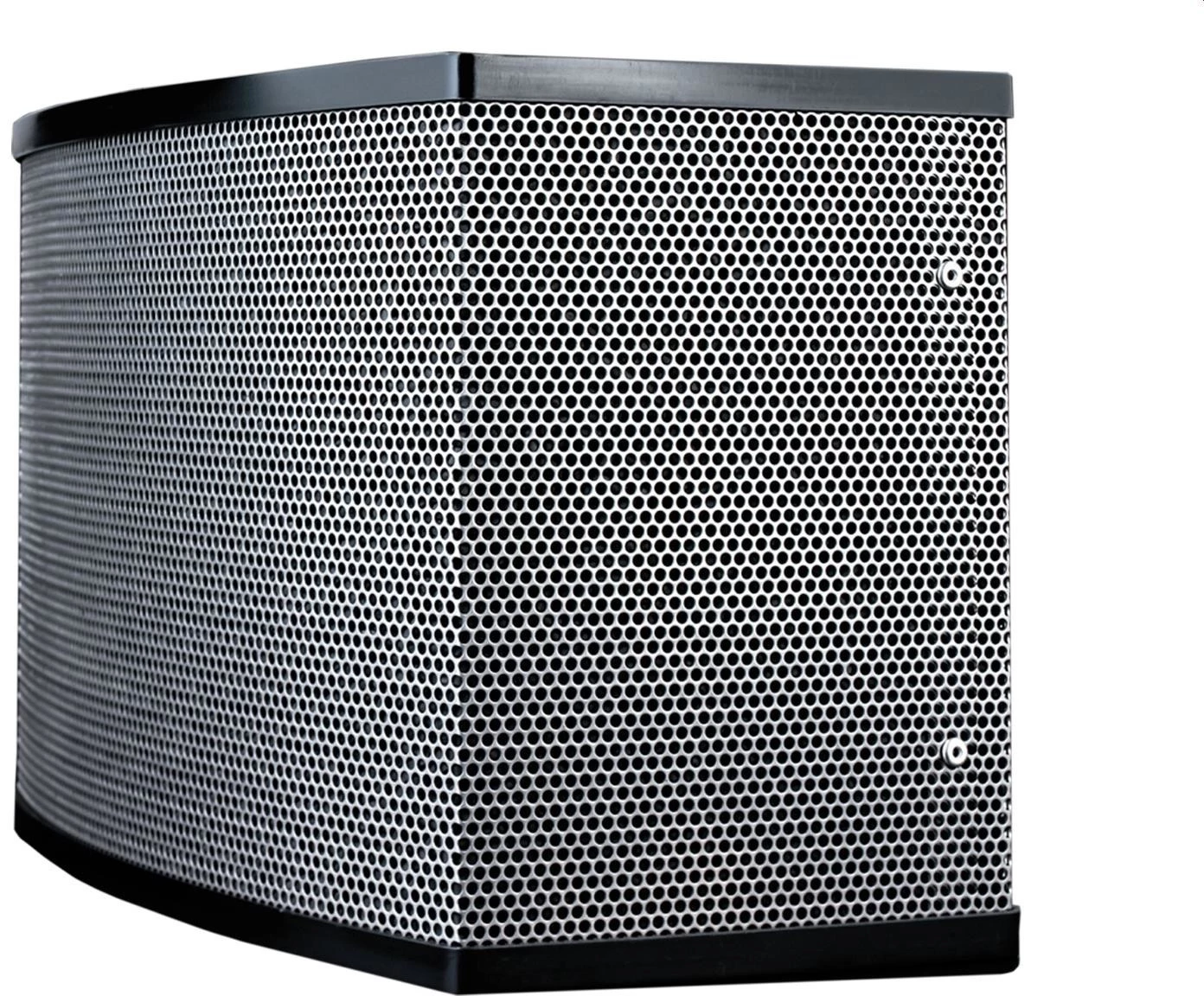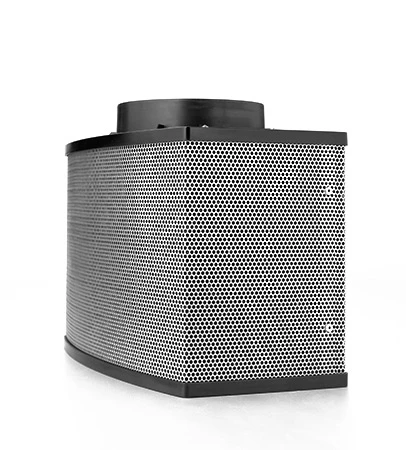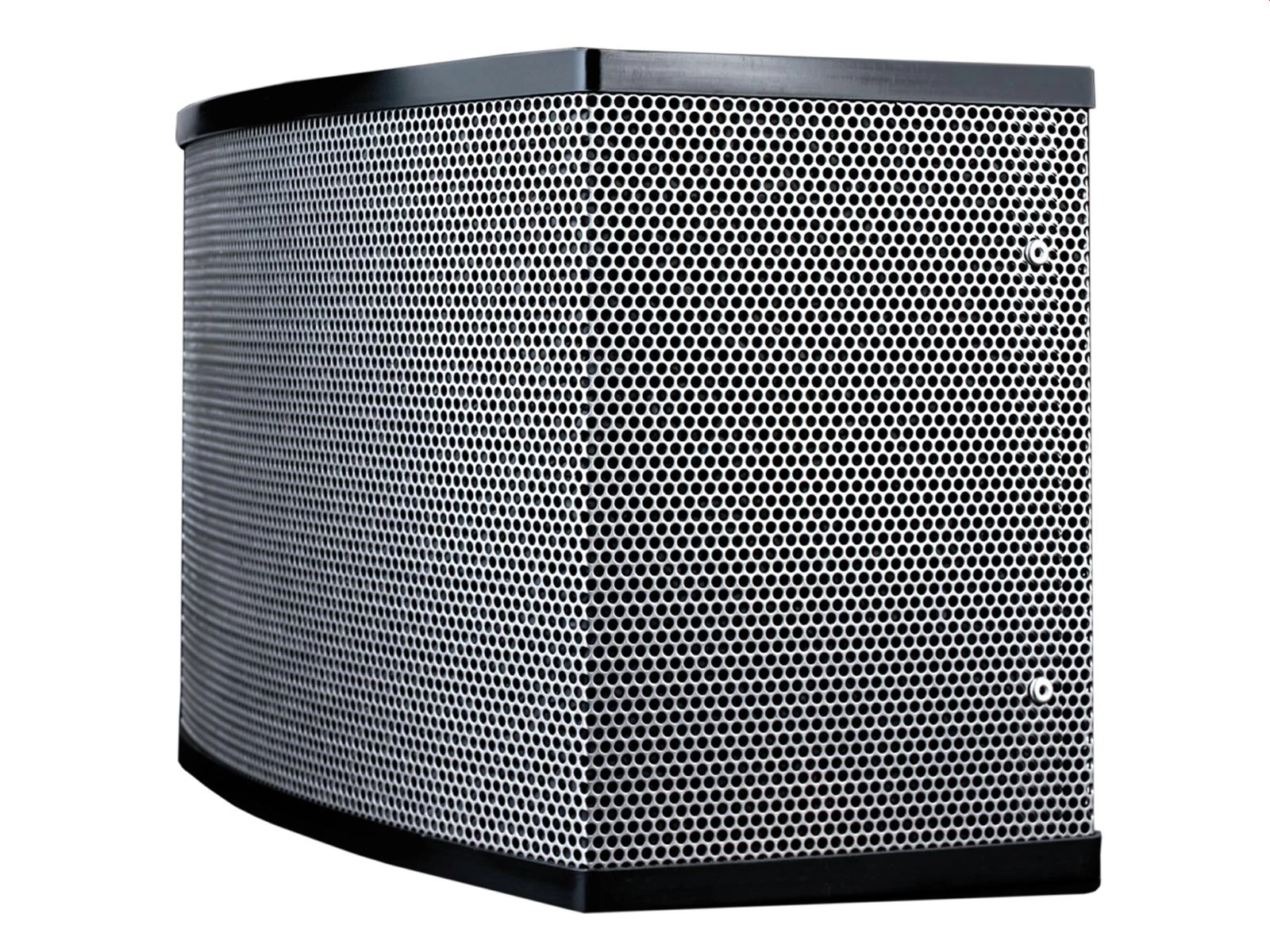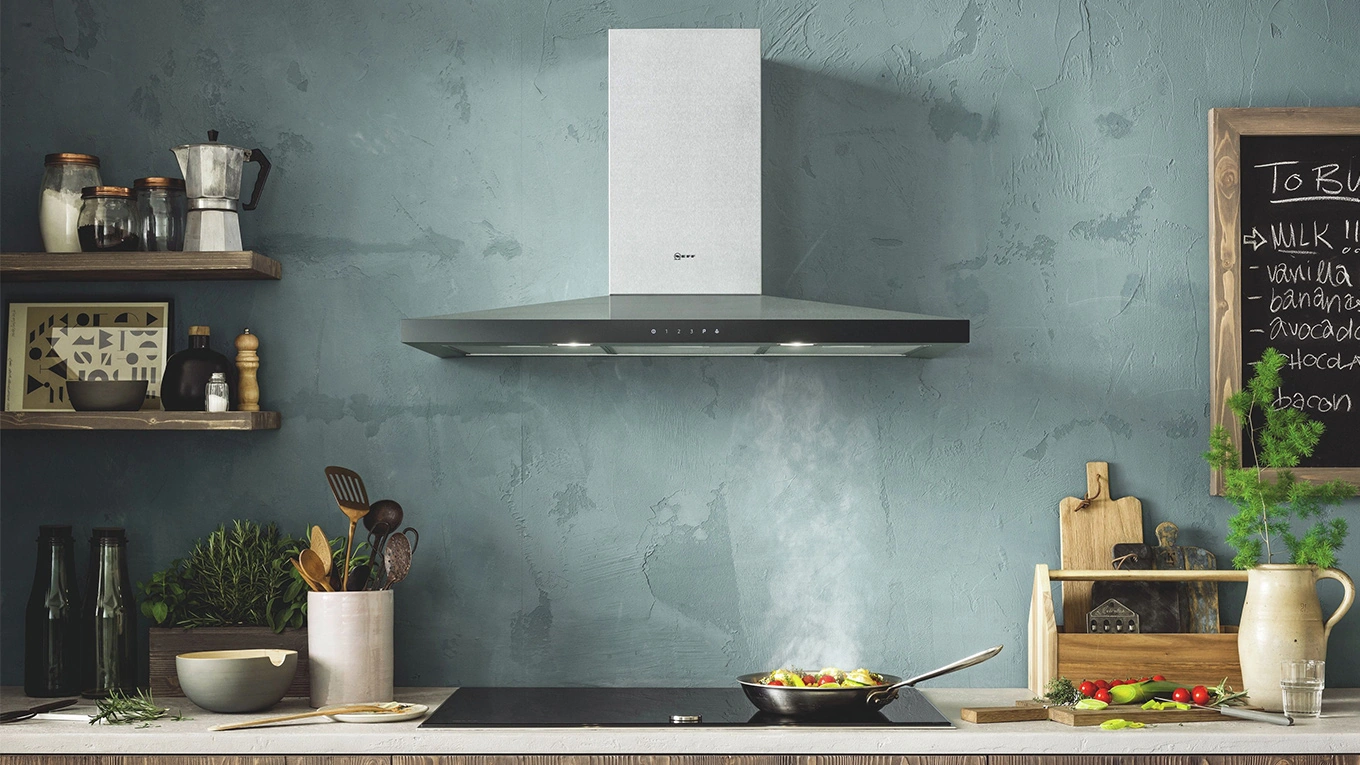
The extractor hood: quiet & powerful.
Why do you need an extractor hood in the kitchen and what do you need to look out for when buying one? In Mykitchens magazine we have summarized everything you need to know about extractor hoods.
reading time: approx. 3 minutes
Why do you need an extractor hood in the kitchen?
Often neglected and forgotten in kitchen planning, but no less important than other kitchen appliances. With an extractor hood, your home stays free of steam and odors. After all, you don't want it to smell like last week's fried fish, do you? Mold in the kitchen (due to moisture when cooking) is also best avoided. A suitable device with a vapor extractor ensures good air in the kitchen.
A vapor extractor, as the extractor hood is technically called, is a device for extracting and filtering cooking fumes and cooking odors. It was invented by an American company in the 1940s. Nowadays, extractor hoods can be found at all well-known manufacturers of kitchen appliances.
Types of extractor hoods
We have taken a closer look at the different types of extractor hoods and highlighted the differences.

The ceiling hood
The ceiling hood is attached to the top of the ceiling and is often more of a design element and less effective compared to other types of extractor hoods because it is usually too far away from the hob. Ceiling hoods are very unobtrusive. One advantage of these hoods is that they illuminate the work area very well.

The wall-mounted extractor hood
The wall-mounted extractor hood is often also called a wall hood or just a wall hood and is attached to the wall above the hob. It has a visible shaft. Wall hoods are available in a wide variety of shapes and materials. For example, in stainless steel, glass or stone.
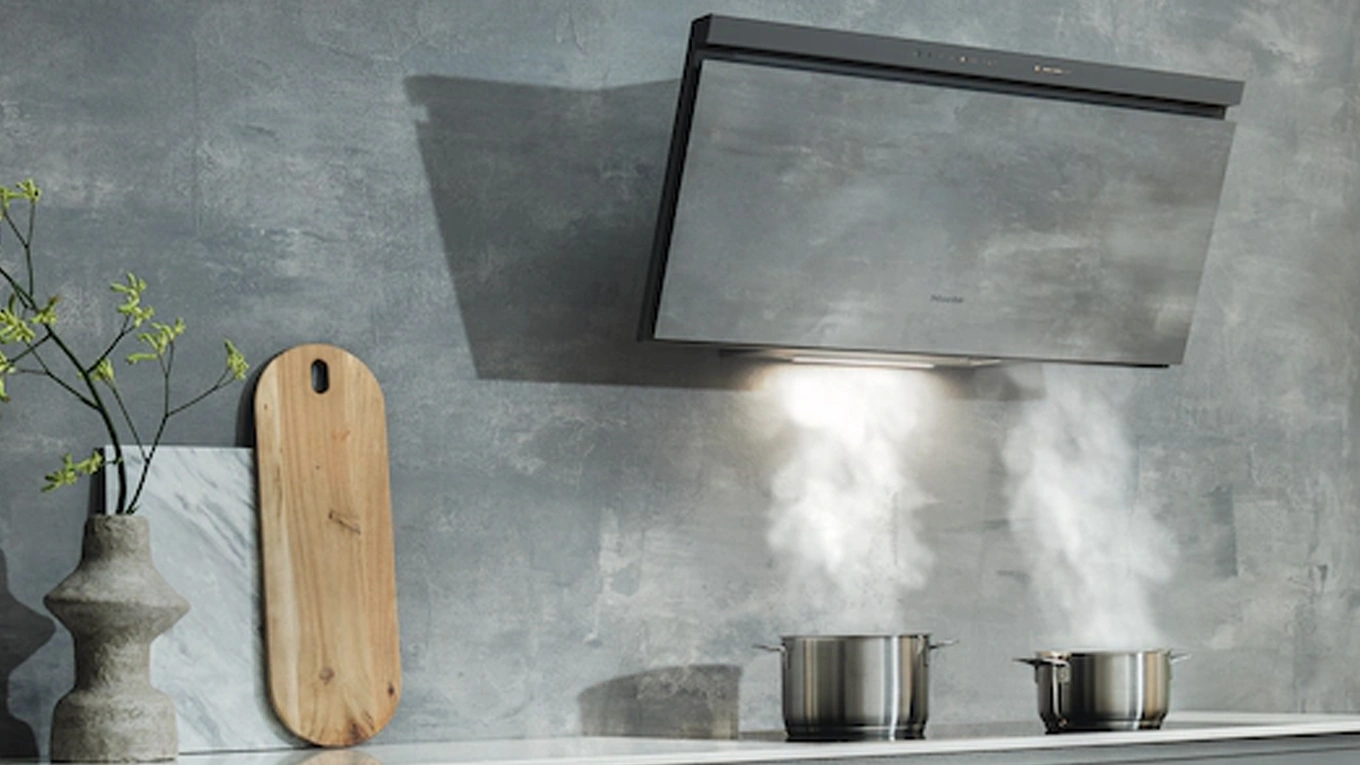
The head-free hood
The head-free hood is a wall hood with an inclined hood screen. It is less functional than the square wall extractor hood because it is less able to suck in cooking fumes from the pots in front.
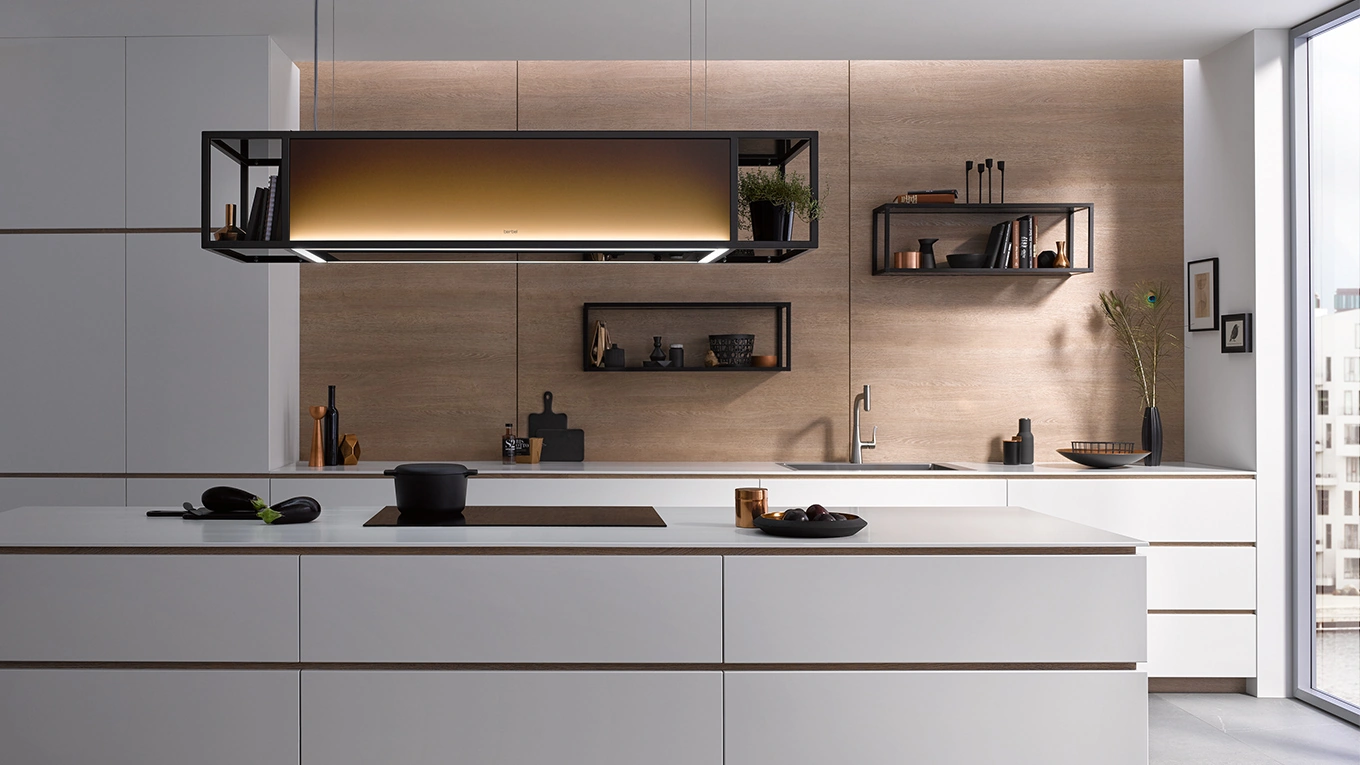
The island hood
The island extractor hood, also called an island hood or island hood, is particularly suitable for kitchens with cooking islands, as it is installed freely hanging above the hob. Due to their design, island hoods are also considered a noble jewel in the kitchen.
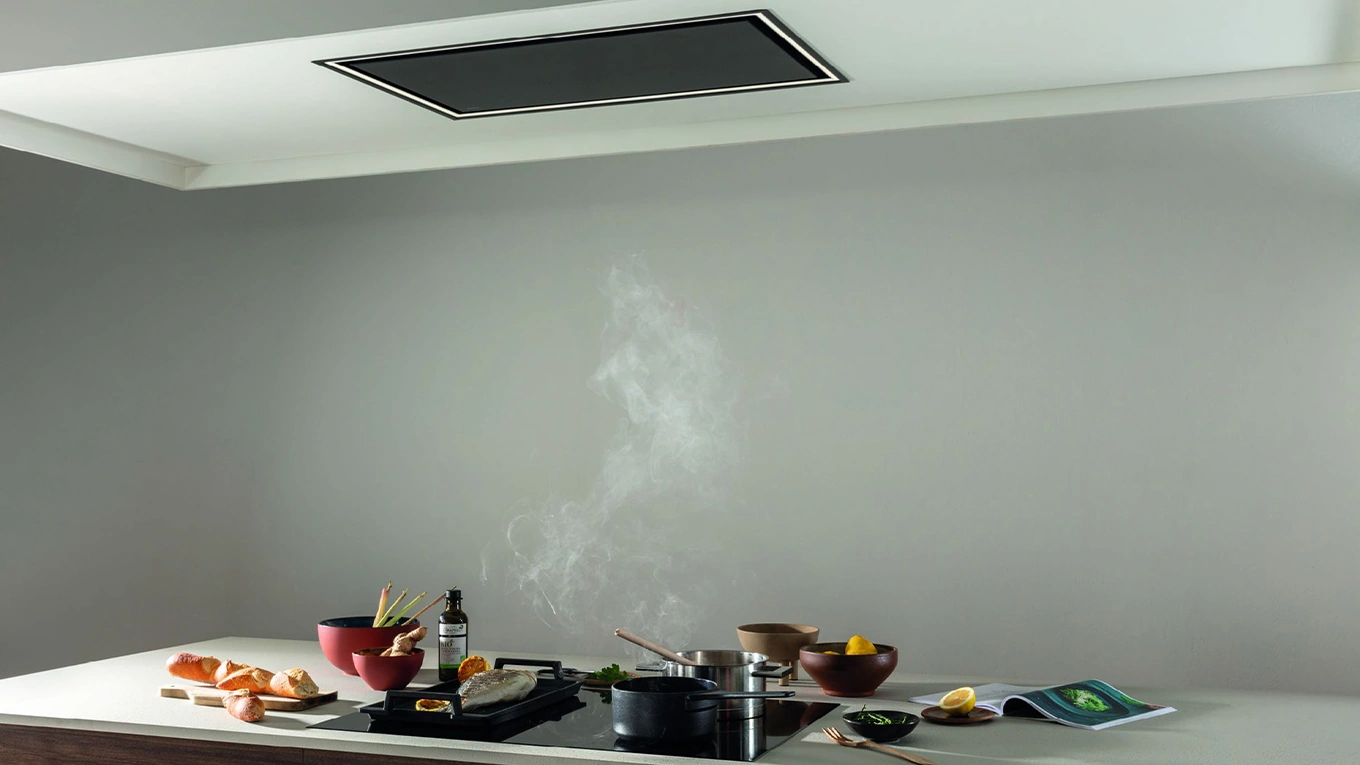
The built-in extractor hood
The built-in extractor hood, also known as a built-in hood or just a built-in hood, is installed in the upper cabinet above the hob. The built-in exhaust air duct does not require the entire interior volume of the cabinet, so the storage space can be used optimally.
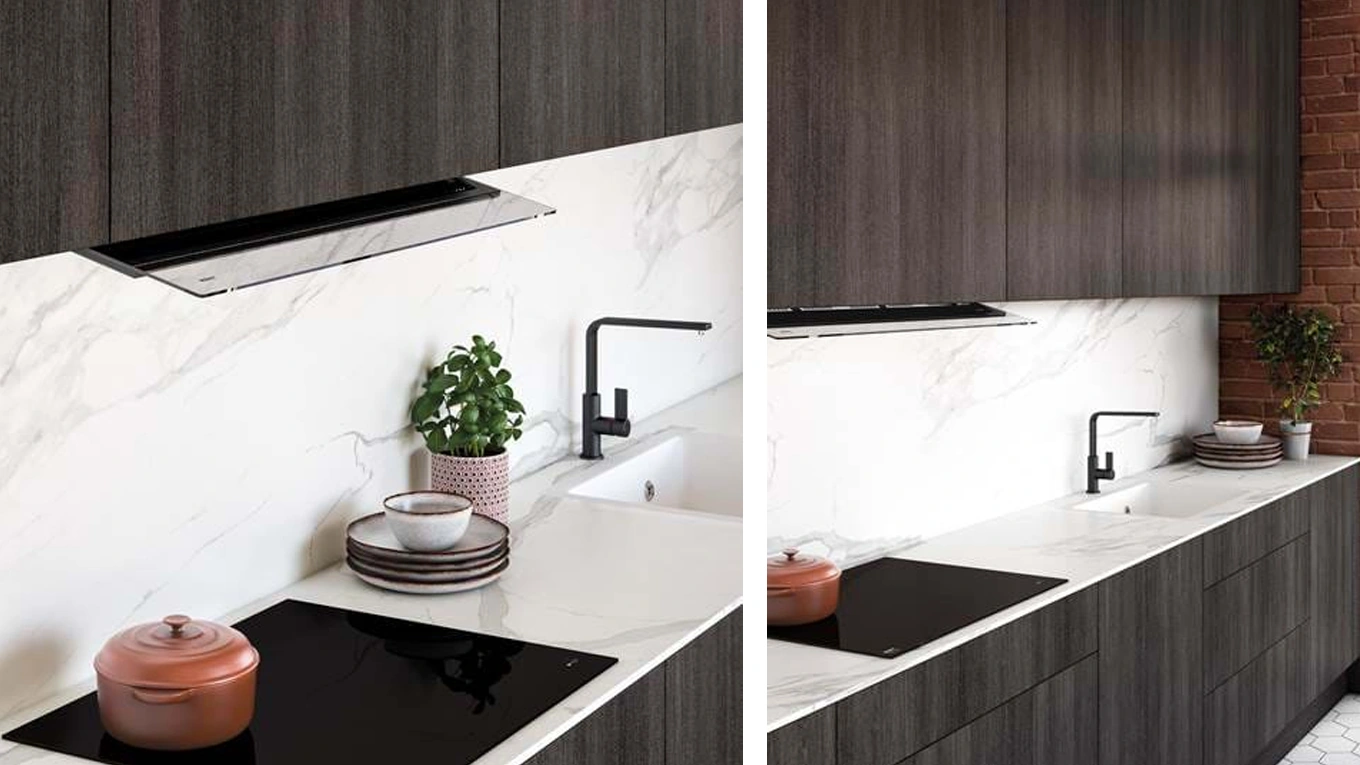
The flat screen hood
The flat screen hood has a flat screen and is therefore not particularly noticeable. Flat screen hoods can be operated with both recirculated air and exhaust air.

The cooktop extractor
For more visibility and a tidy kitchen design, the trend is towards the so-called downdraft system. The extractor hood goes downwards. It sucks cooking fumes and smells downwards rather than upwards and is placed directly on the cooktop. Here we have two devices in one: a cooktop with an integrated extractor hood. In short, cooktop extractor.
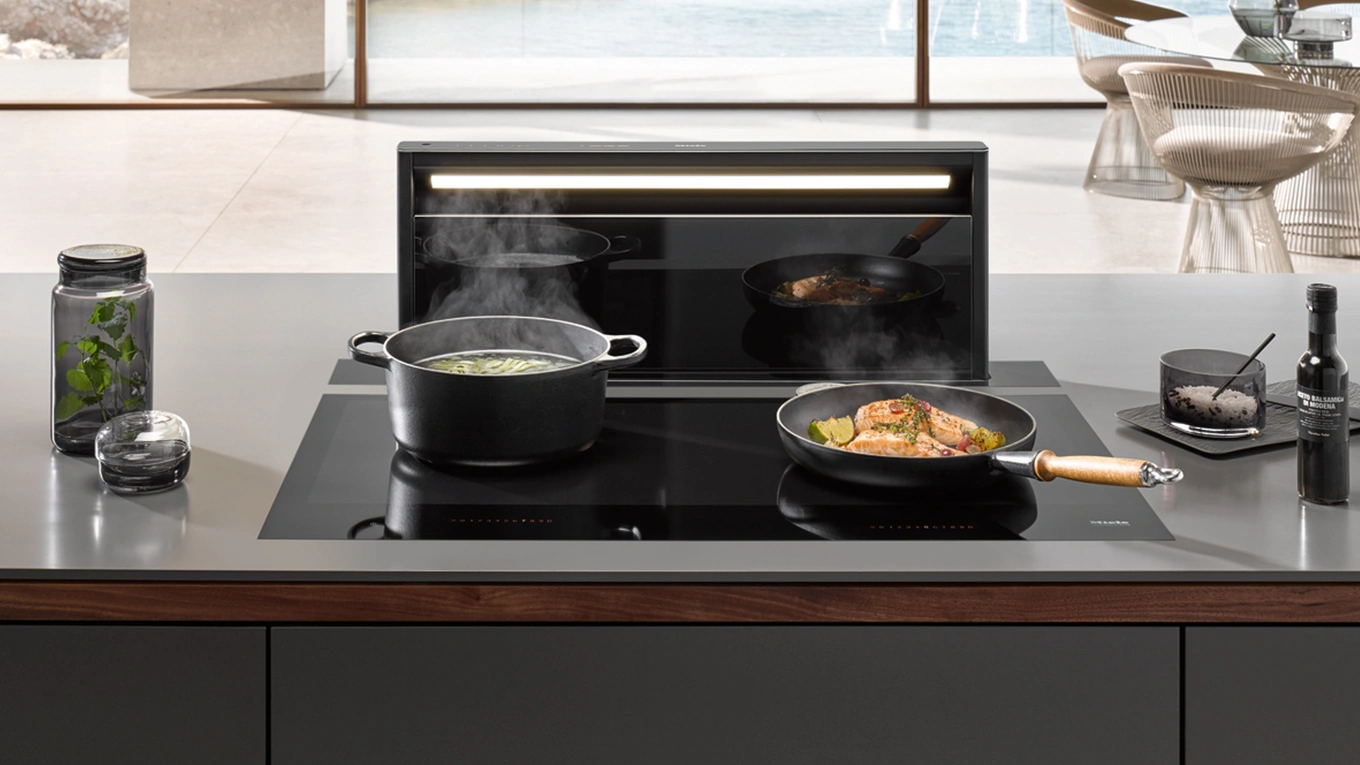
The table fan
Not integrated into the hob, but still on the hob: the table fan, also called a table hood or table ventilation. Its greatest feature is that after cooking it moves discreetly into a niche under the worktop and only comes out for cooking and suction. A modern and invisible kitchen appliance. Perfect for the open kitchen.
The exhaust air technology: recirculated air or exhaust air?
No matter what type of extractor hood, it always depends on the extraction technology or exhaust air technology. Cooking fumes and cooking smells can be absorbed and processed by the extractor hood in two different ways: exhaust air or recirculated air.
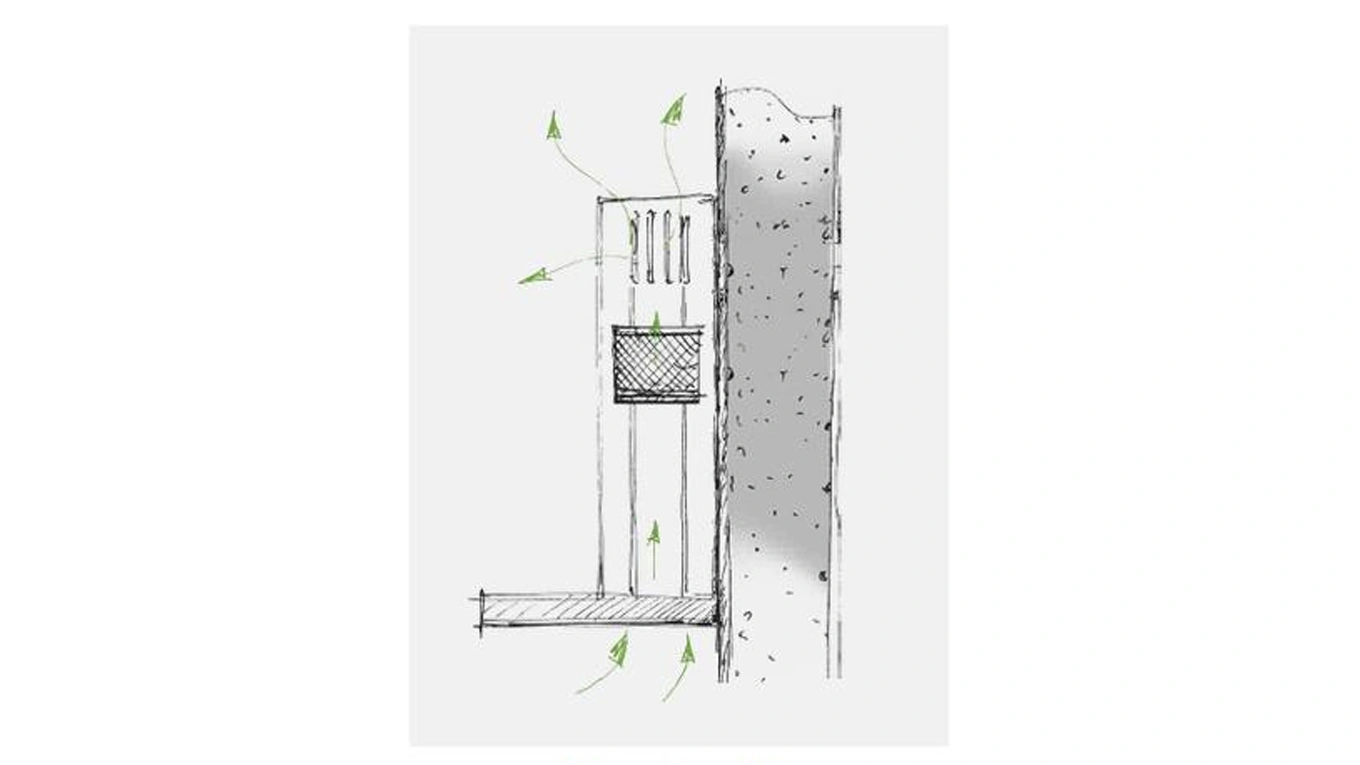

Advantages of the extractor hood 👍
- Better performance: Extractor hoods clean the air more effectively of odors, vapors and moisture. Dirty air is removed and not converted and returned to the room.
- Lower noise level: Because the air escapes directly, the extractor hood has to work less. The noise level can then be reduced even further using external motors.
Disadvantages of the exhaust air hood 👎
- Breakthrough required: An exhaust air hood needs a breakthrough in the wall to the outside through which it can transport the air out. This structural condition is not always present.
Advantages of the recirculation hood 👍
- Requires no conversion work: You don't need to break through a wall for the extractor hood with recirculation. It cleans the air using various filters and then returns it to the room.
Disadvantages of the exhaust hood 👎
- Mold formation: The recirculation hood cannot remove moisture from the room. This can lead to mold formation if you do not open a window when cooking.
- Requires a lot of energy: The cooking fumes also make the activated carbon filter moist and can bind more difficult odor molecules. Therefore, you should leave the extractor hood running for a few minutes longer after cooking to dry the filter. However, this has a negative effect on energy consumption.
- Is louder than an exhaust hood: Another disadvantage is that recirculation extractor hoods are significantly louder than exhaust extractor hoods. They also have less power.
Volume & performance of the extractor hood
Two important purchase criteria for the extractor hood are the volume and performance. We will now explain why exactly and what you should pay attention to in detail.

How loud is an extractor hood?
Most extractor hoods have a volume of 56 to 60 dB. That is about as loud as a normal conversation. But there are also very quiet extractor hoods under 50 dB, which is roughly equivalent to a whisper. Or slightly louder extractor hoods with up to 70 dB, which is comparable to street noise.
You can influence the volume of the extractor hood depending on the extractor variant. In general, a recirculating air extractor hood is louder than an exhaust air extractor hood, as the air is not removed but converted.
There are also particularly quiet extractor hoods, e.g. the Miele KMDA Silence. You can read more about noise levels in Extra quiet kitchen appliances.
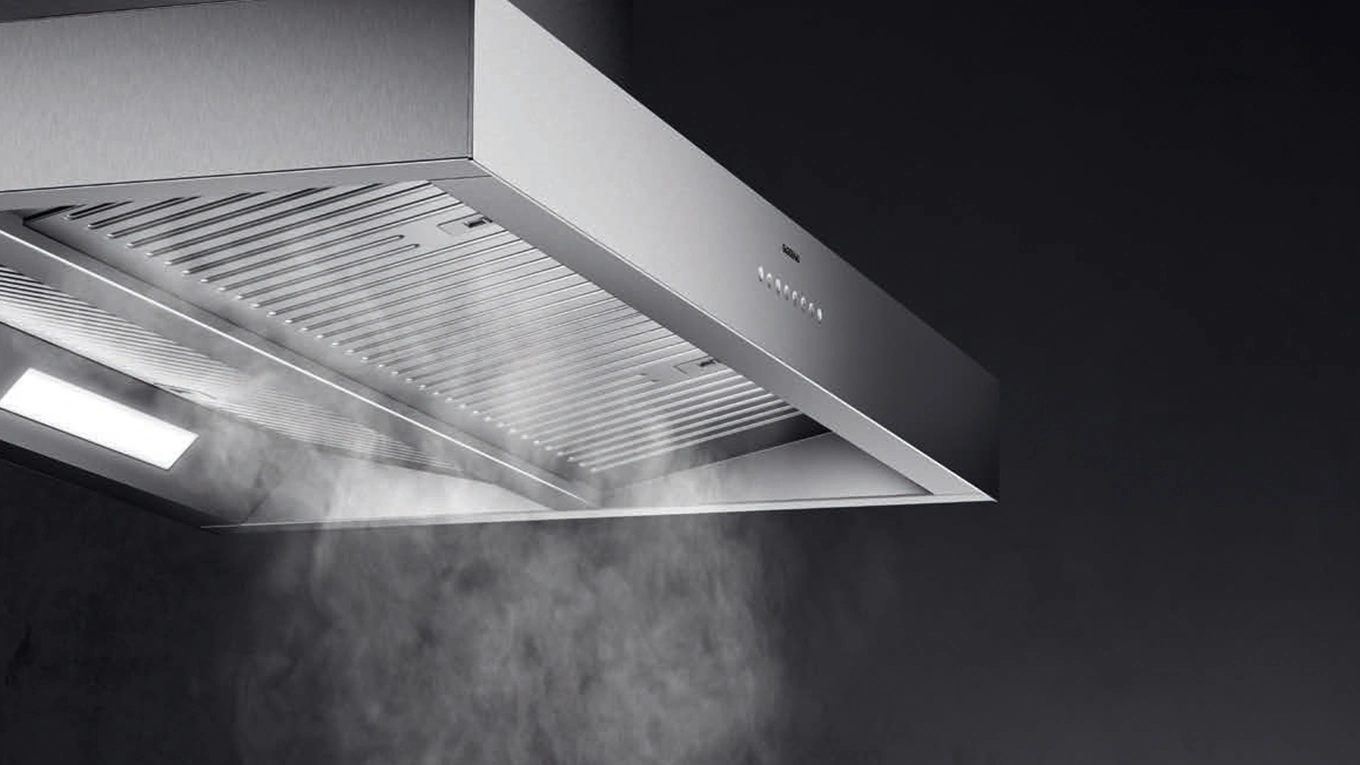
Air output of the extractor hood
The air output indicates how many cubic meters of air per hour (m³/h) are removed. This depends primarily on the volume of the room. So in a small kitchen you need an extractor hood with a lower air output than in a large kitchen. If you have high ceilings, you must also include this in the calculation of the required air output. An extractor hood in a small kitchen of around 20 square meters should extract at least 120 m³/h of air at the highest level. A kitchen twice as large needs an air output of at least 480 m³/h. However, performance losses can occur in normal use. For example, due to exhaust air paths that are too long in extractor hoods or cross-flows through walls and cupboards.
Accessories for the extractor hood
Discover the best accessories for the extractor hood in our shop!
Metal filters
Metal filters on the extractor hood are also called grease filters. They absorb most of the grease when cooking and also some of the moisture. The metal filter is installed on the outside of the hood and should be replaced after three to four years.
However, cleaning is recommended every now and then! Metal filters are usually dishwasher safe and can therefore be cleaned easily. The recommended interval is 14 days.
Activated carbon filter
The activated carbon filter (sometimes just called a carbon filter) removes odors from the air. It is particularly important for recirculating extractor hoods, which return the purified air to the room. It consists of activated carbon, which attracts certain molecules (in this case odors) like a magnet. Classic activated carbon filters should be replaced every six months.
Renewable filters
Then there are also renewable filters for the extractor hood. They do not need to be replaced, but regenerate themselves. For example in the oven. That is why they are sometimes called long-life filters.
Pipes
- Plastic pipe: This exhaust pipe has a smooth wall. It ensures optimal air flow and is insensitive to temperature. One advantage is that the temperature influence does not change.
- Flat duct: The flat duct also has a smooth wall. However, it has round outlet nozzles and a round wall box. So-called transition pieces must therefore be used. These can lead to air turbulence. You can also purchase a flat duct in a flat version. However, the flatter the duct, the worse the air flow.
- Aluflex pipe: An aluminumflex pipe has a low corrugation height (3 to 4 mm), is flexible and flame-retardant.
- Spiral hose: A spiral hose is highly flexible and can be laid easily. It has large corrugations that cause strong turbulence and an irregular air flow. This can lead to loss of performance and increased noise.
External motor
An external motor is an external fan on the extractor hood. It is mounted on the outside wall or roof and reduces noise.
Window contact switch/chimney deflector
There is a risk of negative pressure with the extractor hood. Warm air can escape, which is why a supply of fresh air is essential. You can simply open a window or install so-called supply air ducts.
A special feature is the simultaneous use of the extractor hood and chimney. Here, toxic combustion gases can be prevented by a window contact switch. It ensures that the extractor hood can only be switched on with fresh air. If the chimney shaft is also the extractor, you need a so-called chimney deflector. This allows the air to flow freely into the chimney.
Top sellers: These are the best extractor hoods
Before buying a kitchen appliance, you can sometimes be overwhelmed. The selection of products, models, colors and functions is large. That's why we have simply listed our three product highlights from the extractor hood category.
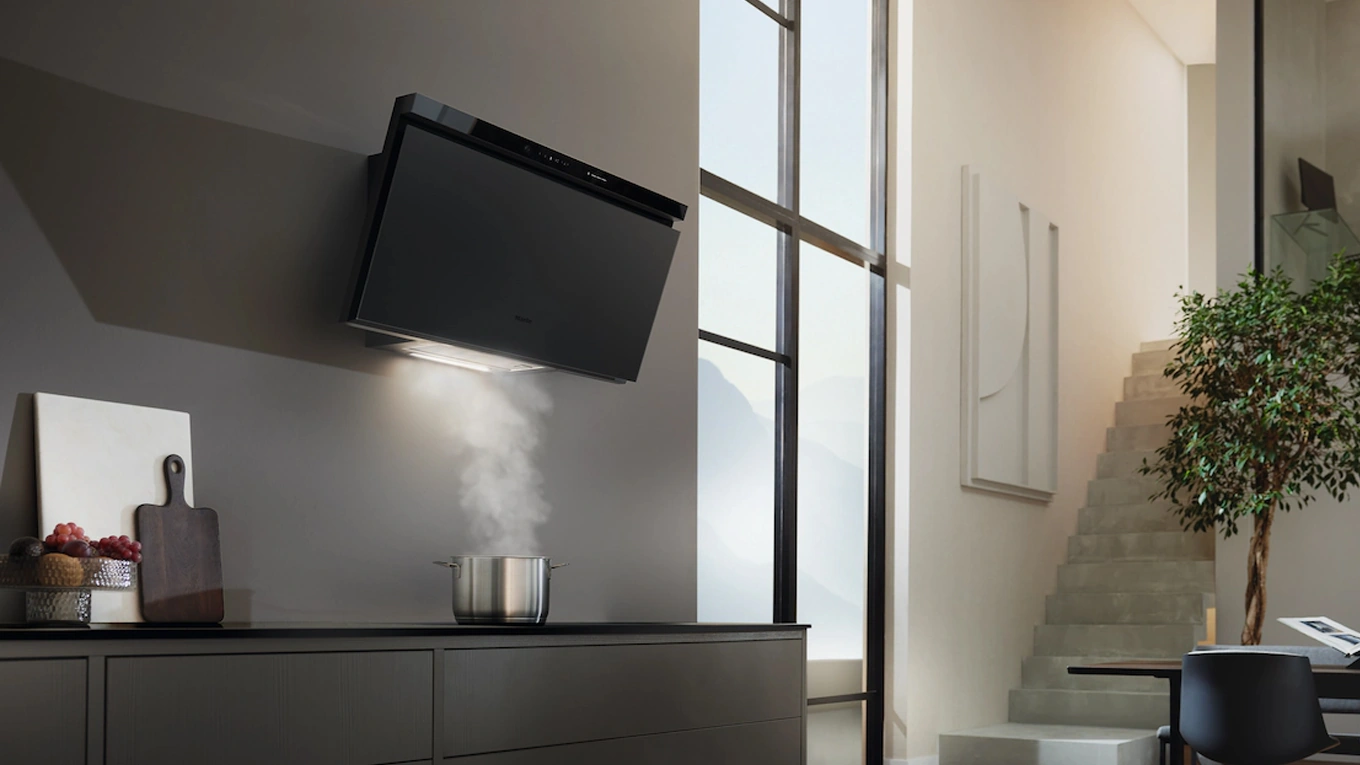
Miele extractor hood
The Miele extractor hood is available in all possible shapes and colors. Miele devices are very popular. Because they have excellent quality and a long service life (all devices are tested for up to 20 years). Miele extractor hoods are also available in different price ranges: cheap Miele extractor hoods from around 500 euros and expensive Miele extractor hoods for around 6,000 euros upwards (e.g. the Miele Aura 4.0 Ambient island hood).
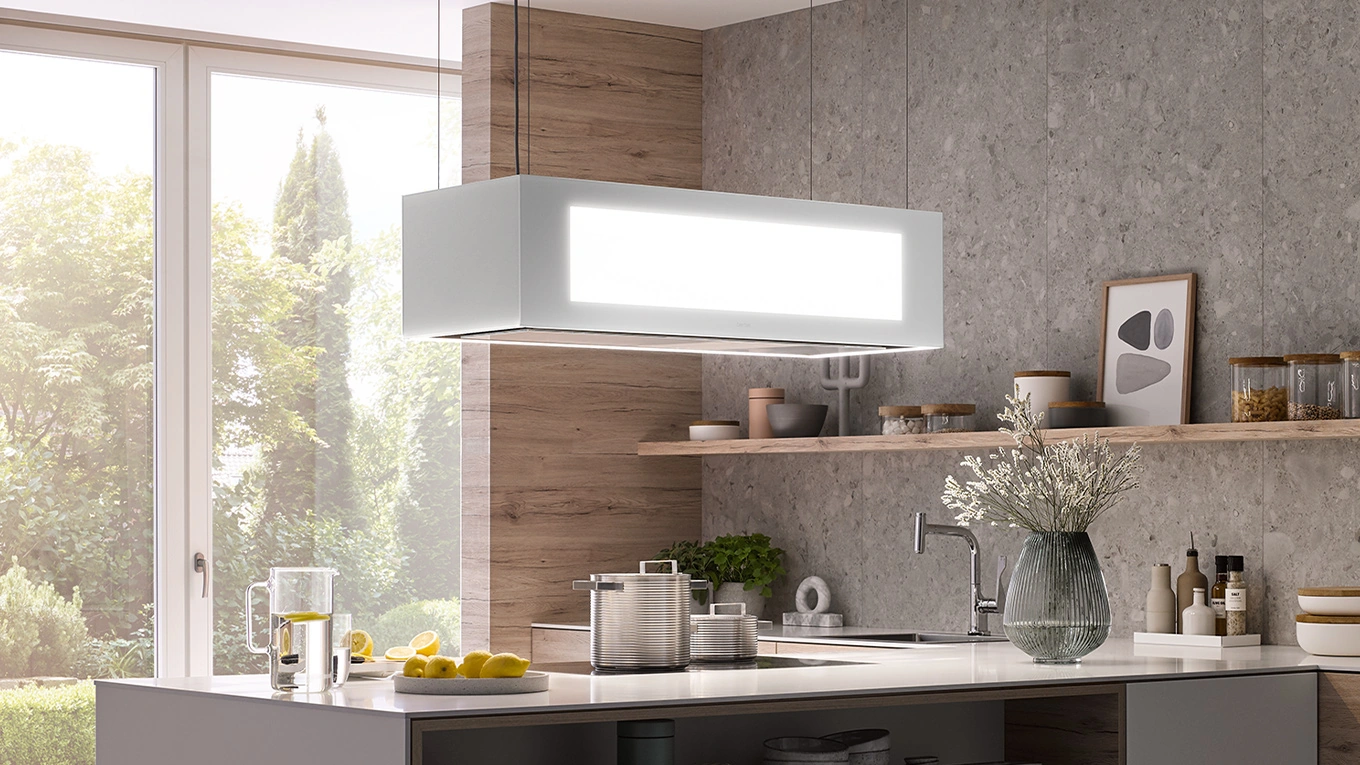
Berbel extractor hood
The Berbel extractor hood is a product from the extractor hood specialist. The special feature of every Berbel extractor hood is the so-called Berbel principle. Cooking fumes and cooking smells are extracted using centrifugal force. Filters are not necessary. Our bestseller from Berbel: The Skyline island hood, which is available in various colors and shapes.
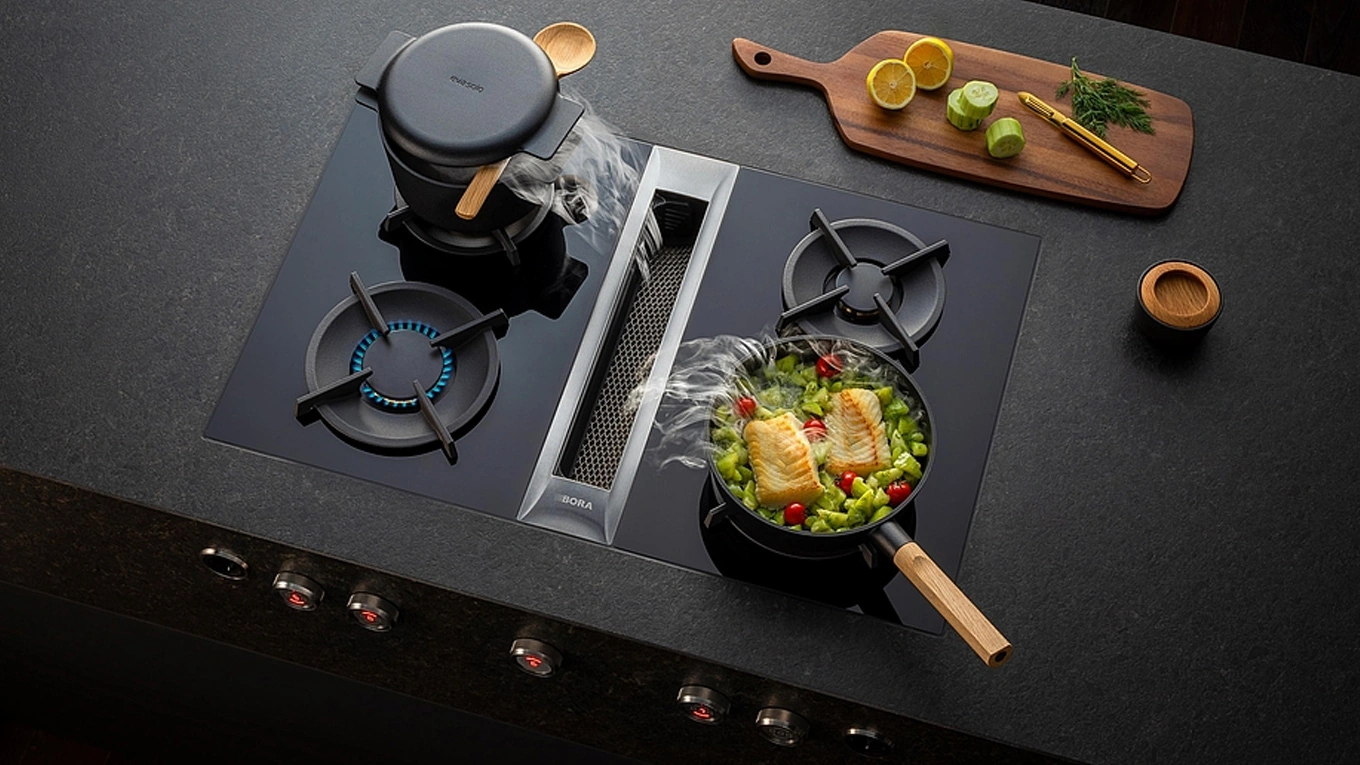
The Bora cooktop extractor
The Bora cooktop extractor is an indispensable part of the modern kitchen and is probably the most popular choice for a modern cooktop extractor. Whether the BORA Professional for the large kitchen or the small 60 cm BORA S Pure cooktop as a small cooktop extractor - BORA cooktops are available for every type. You can request a personal offer for the BORA cooktop here.

